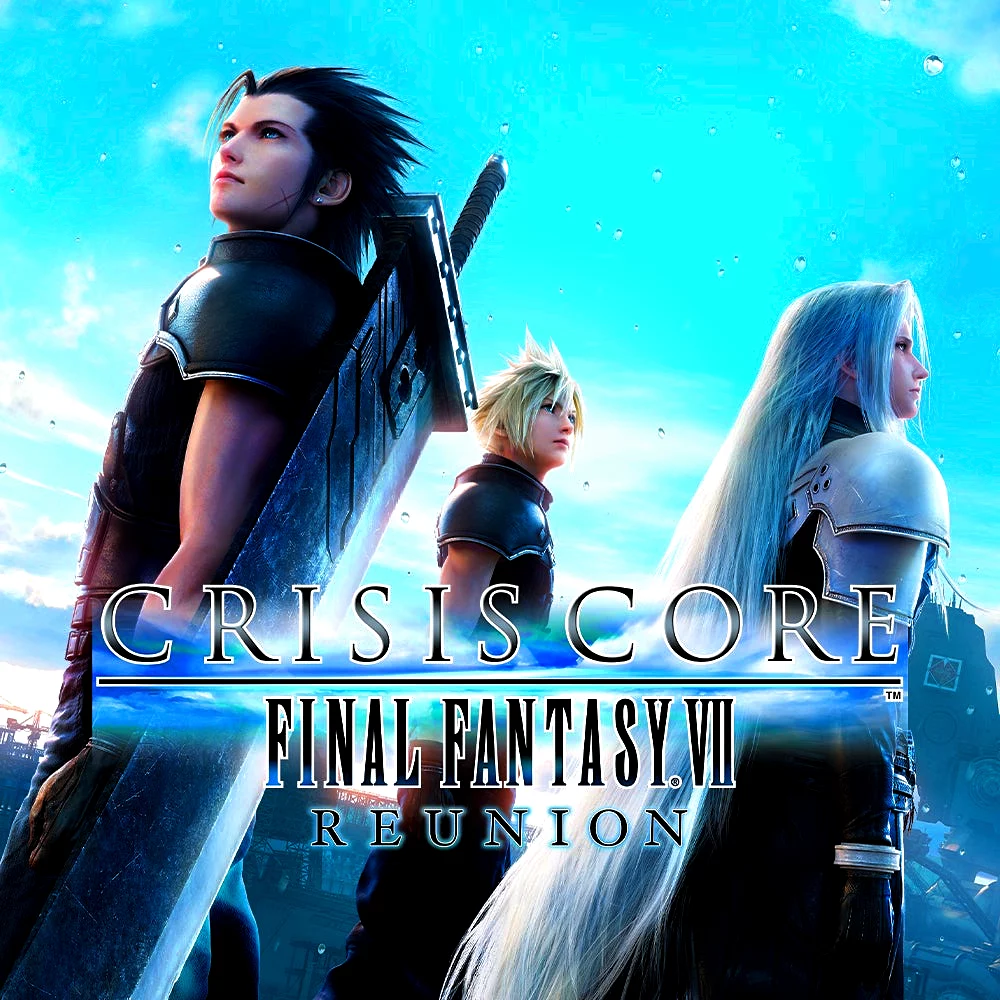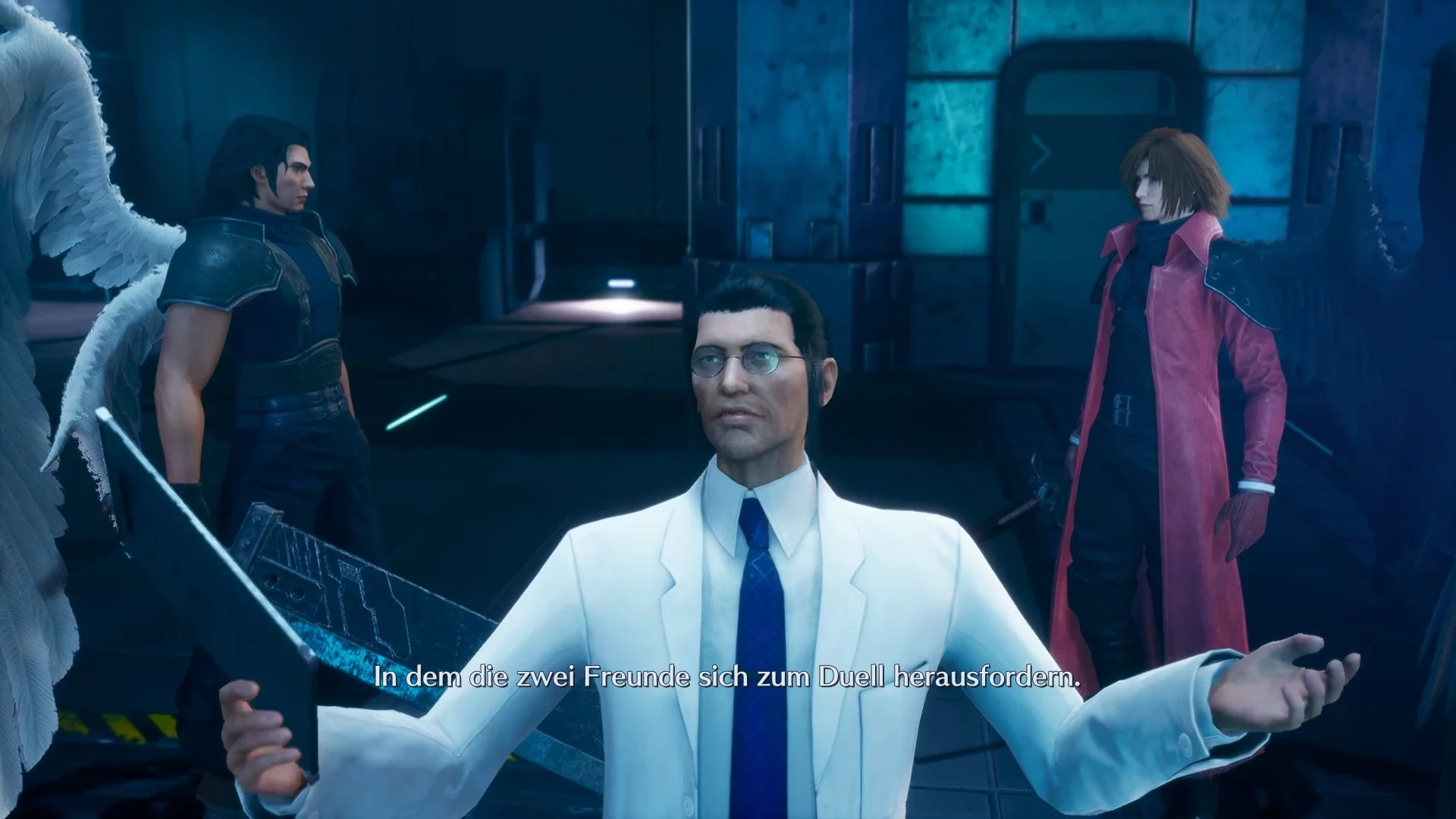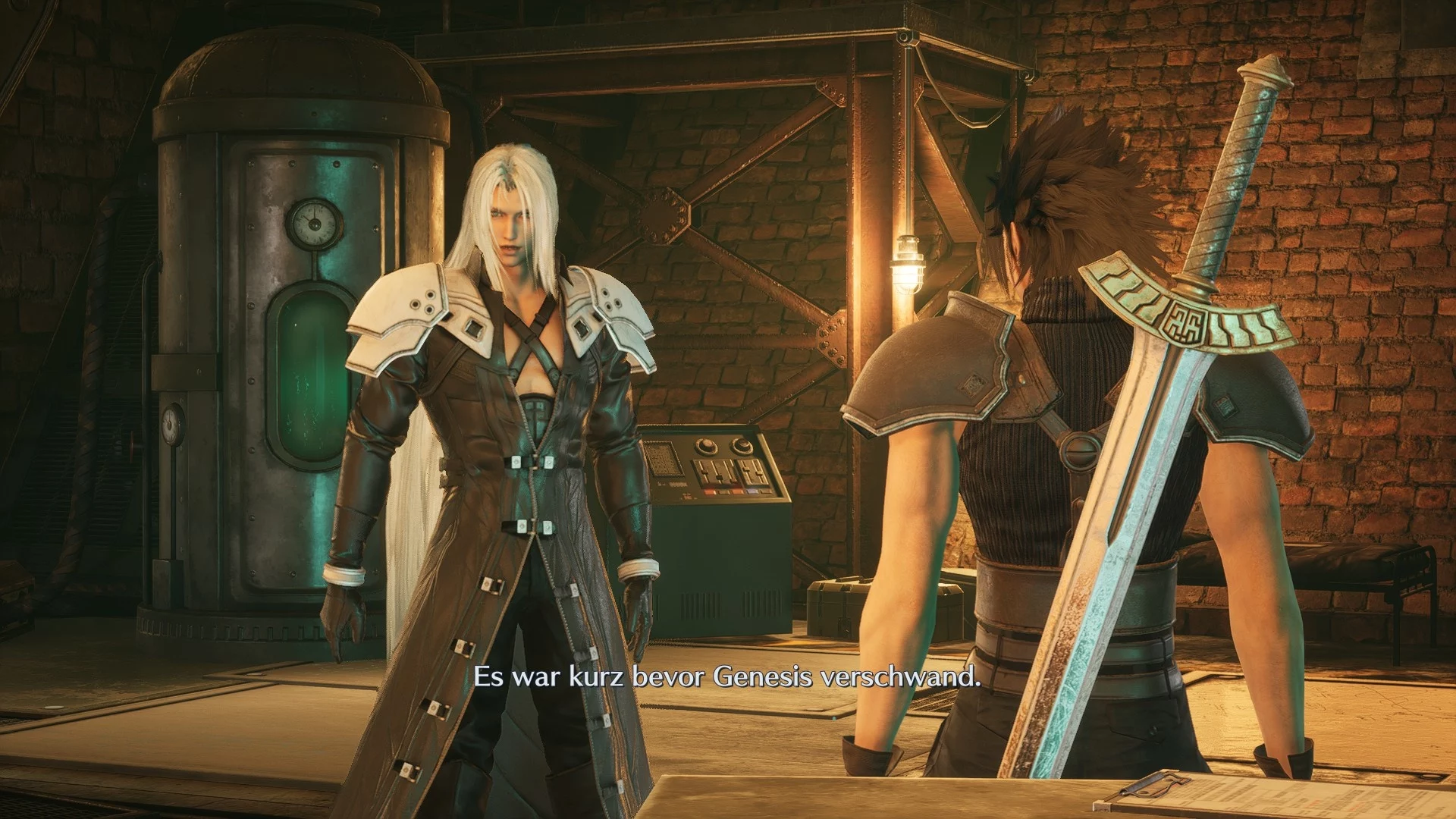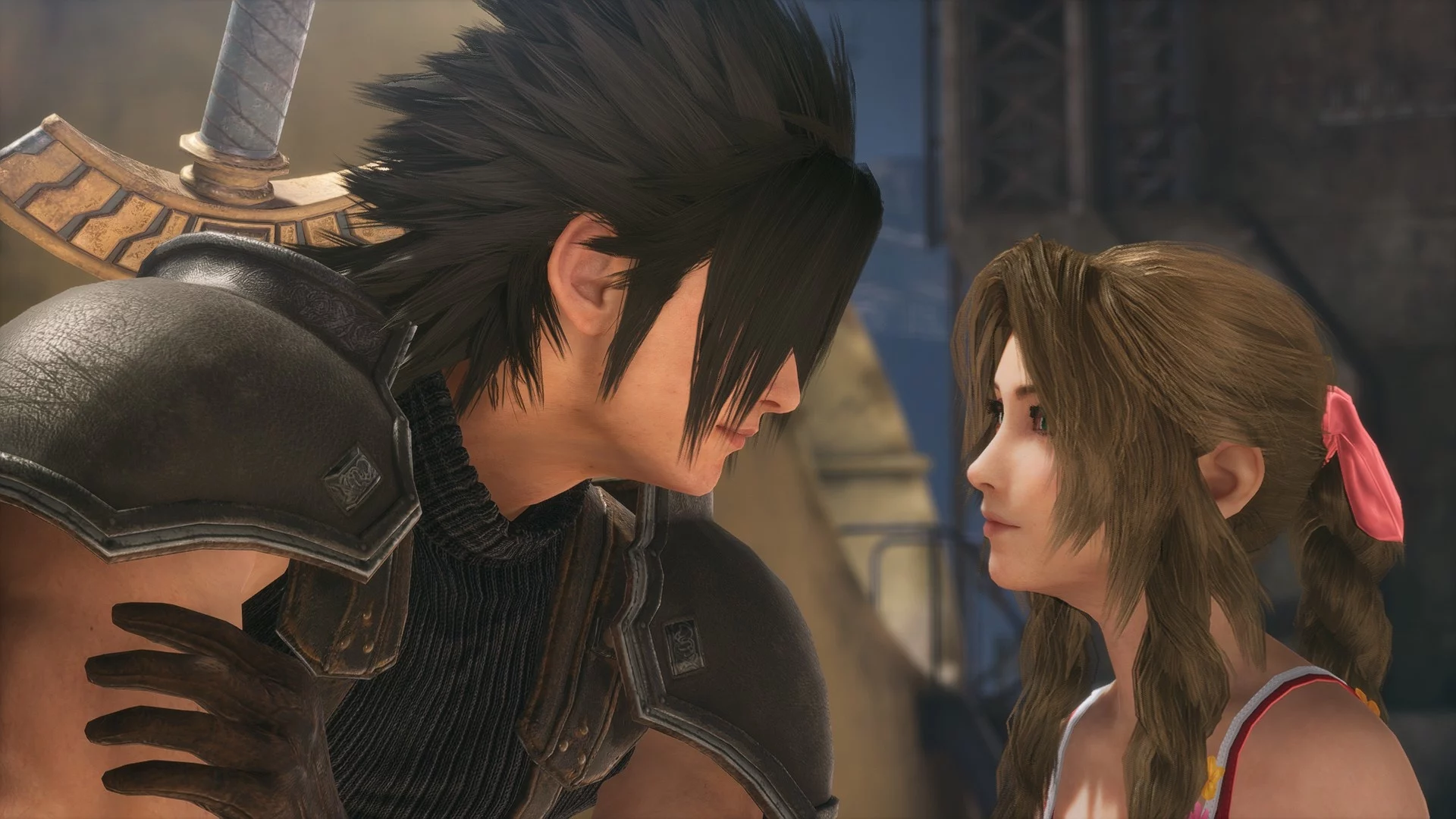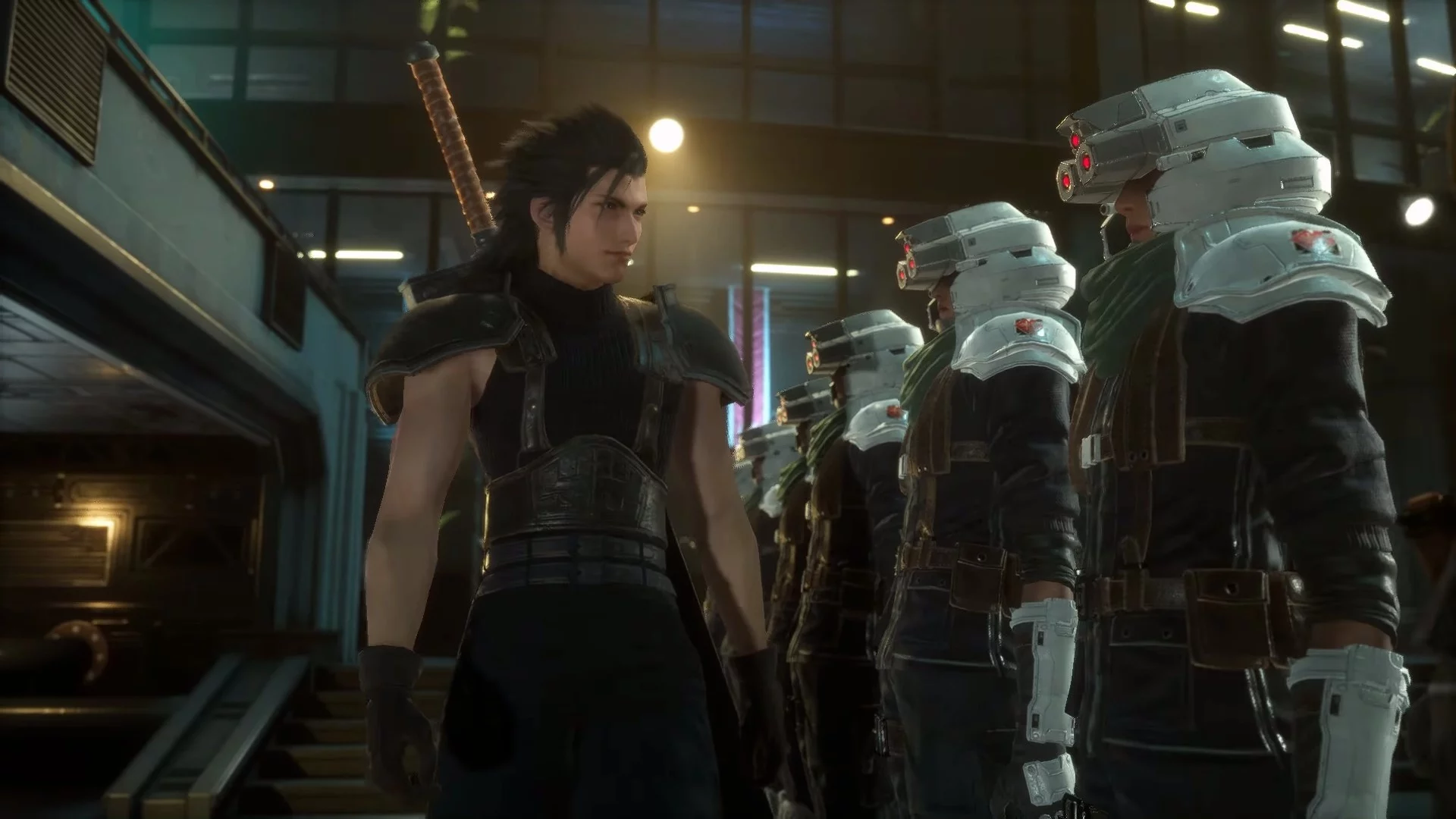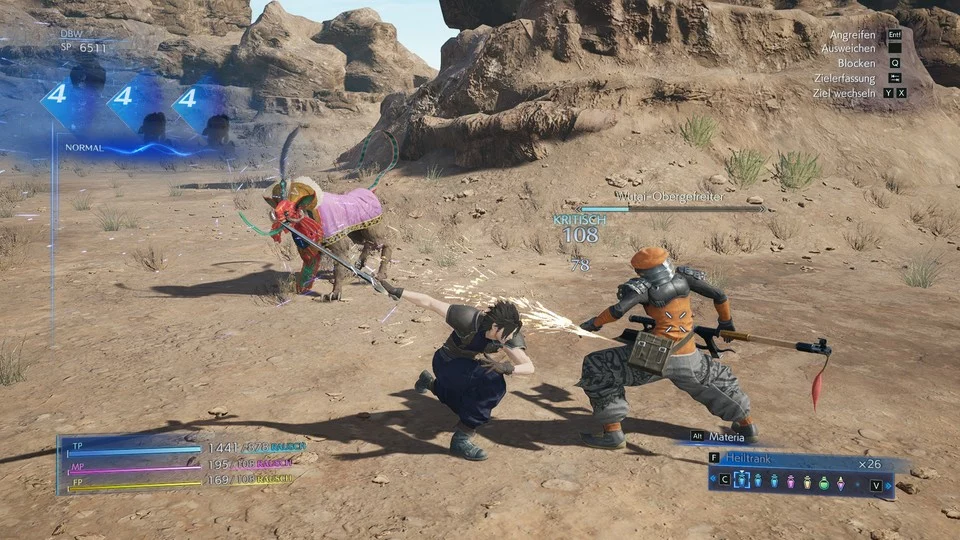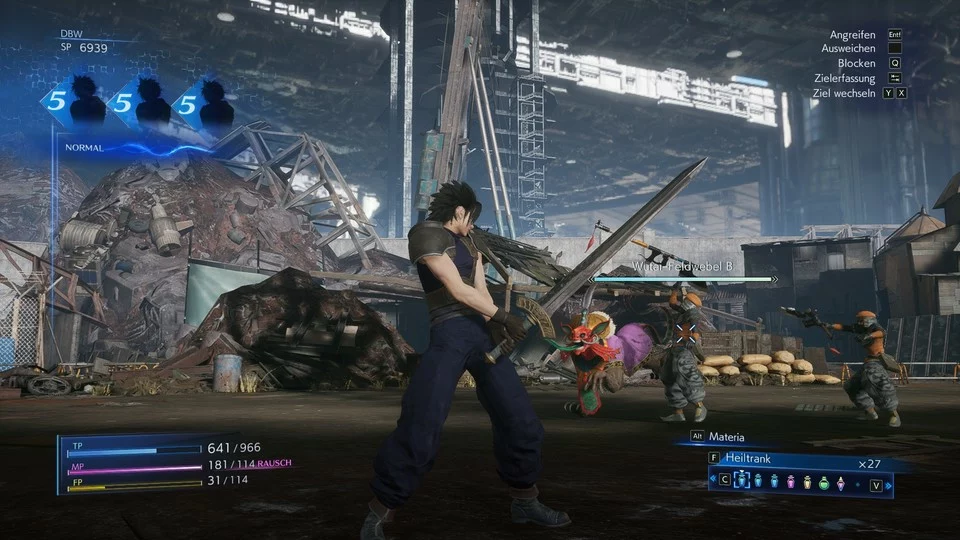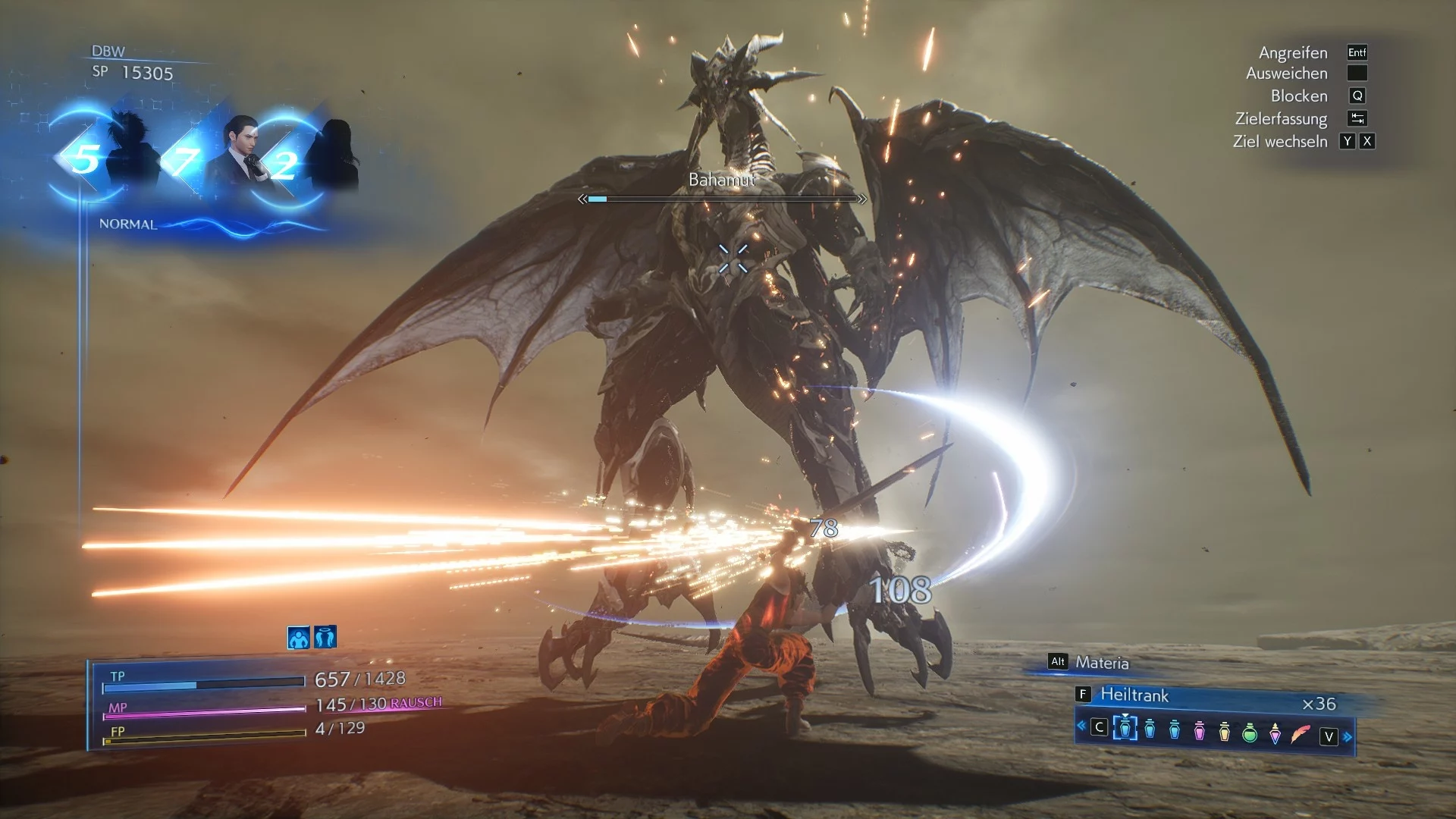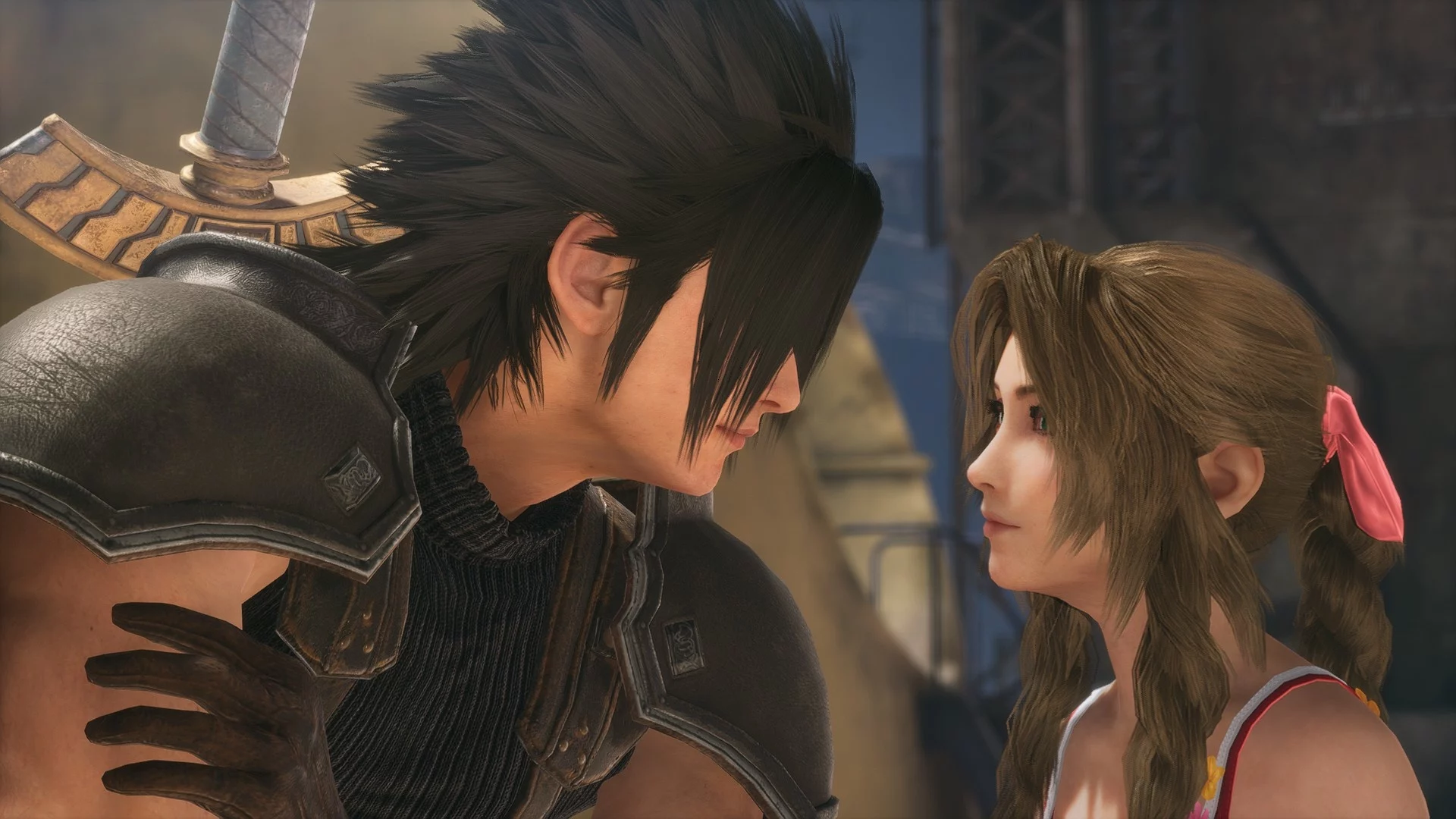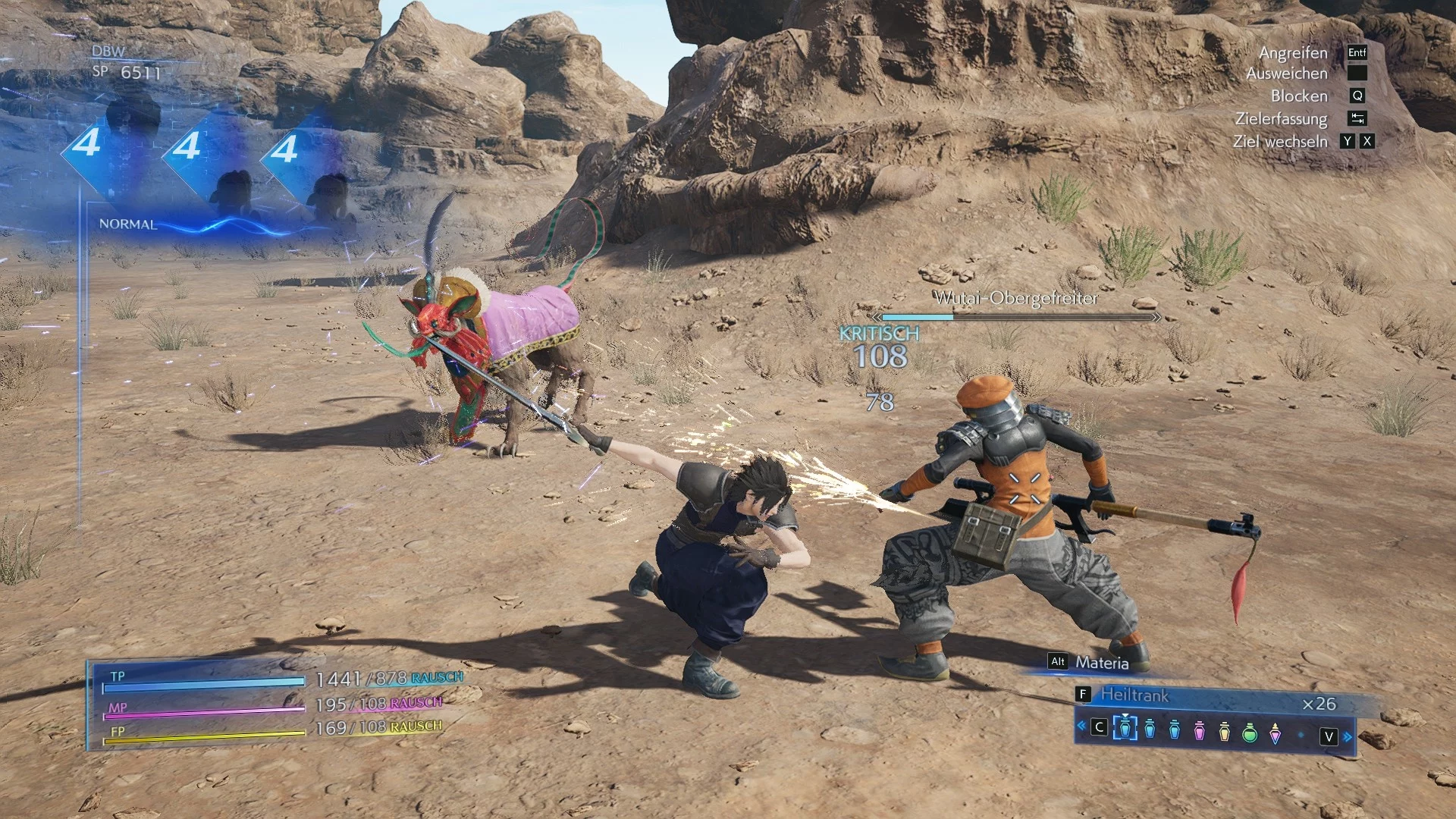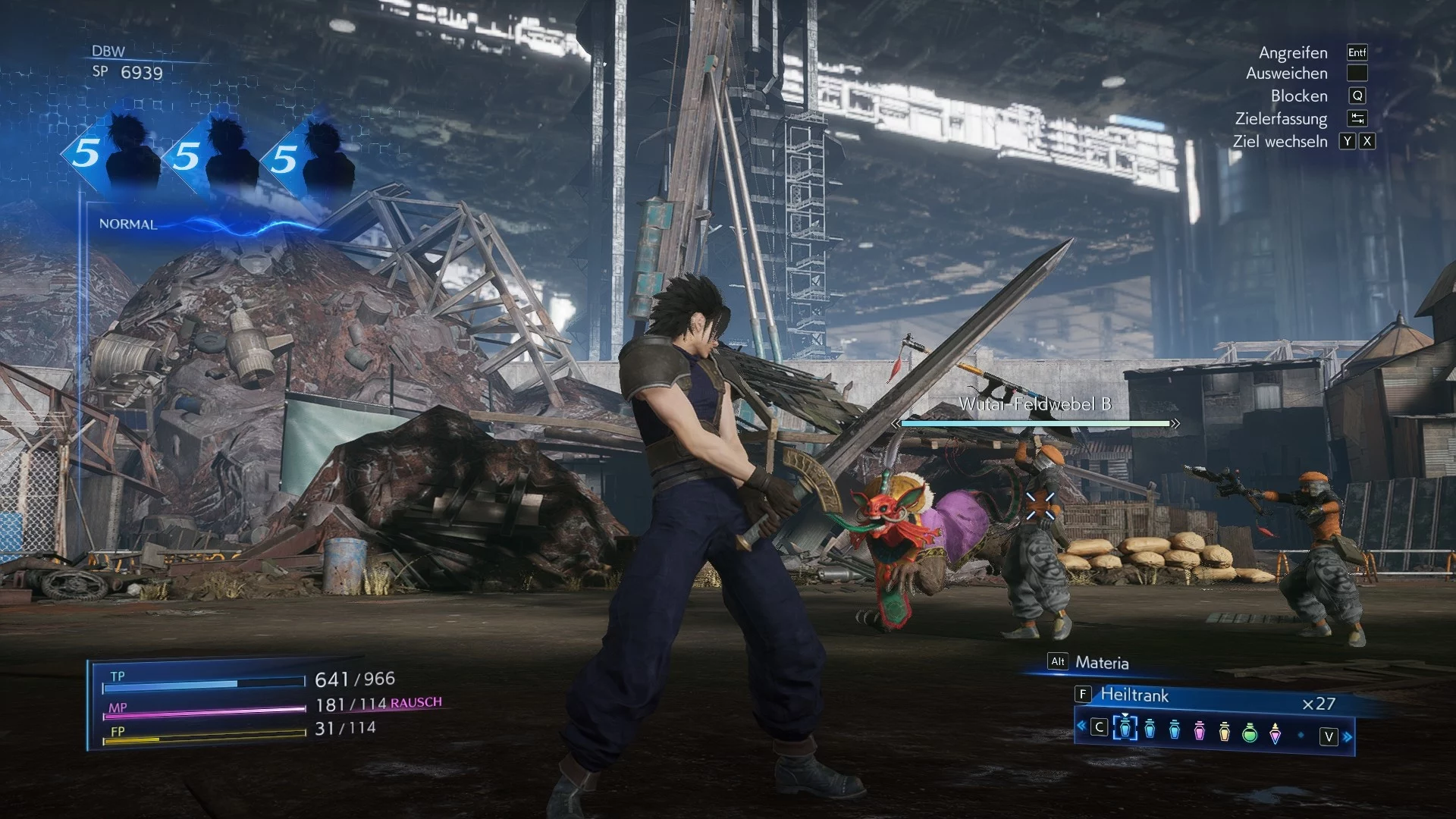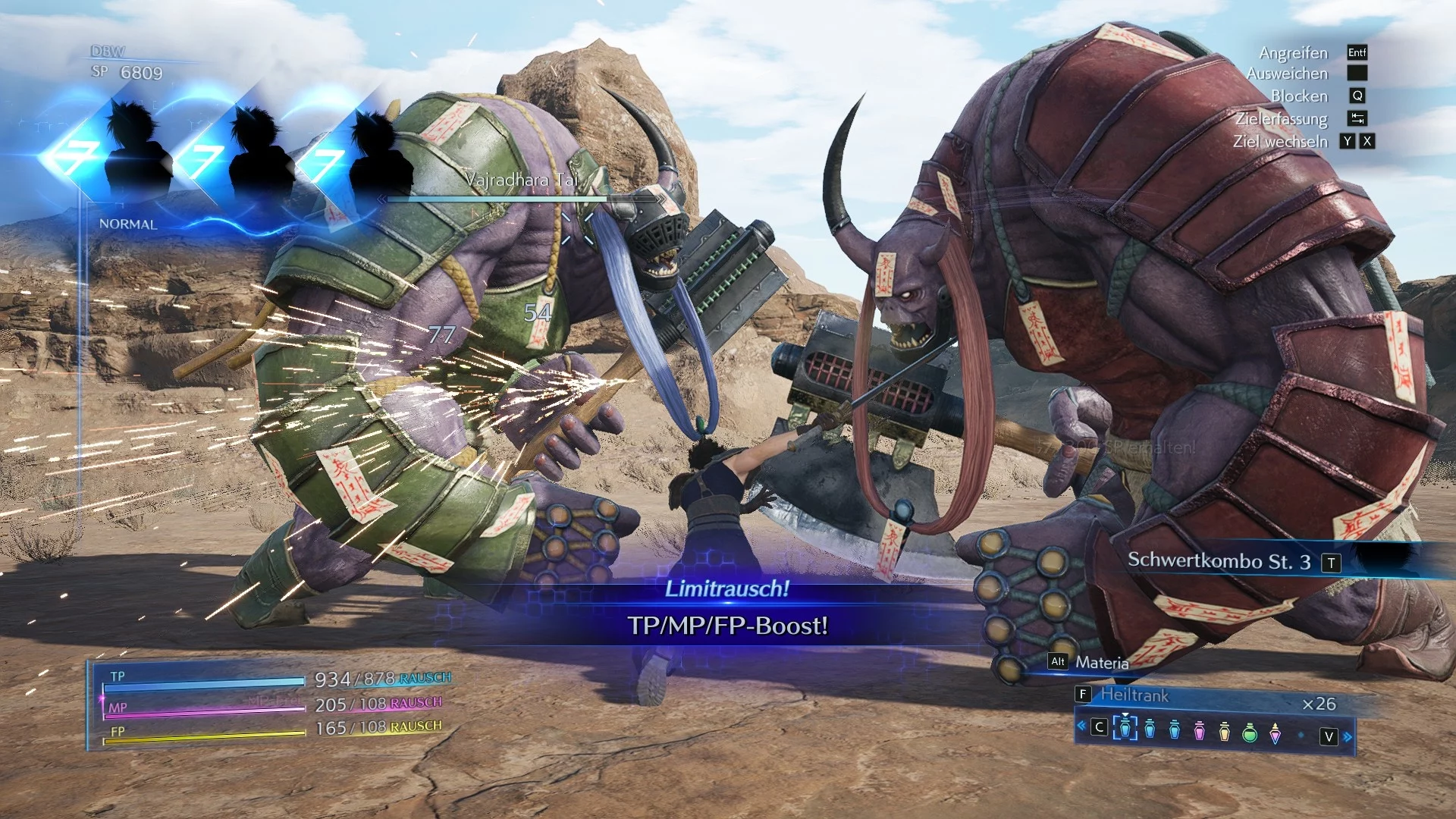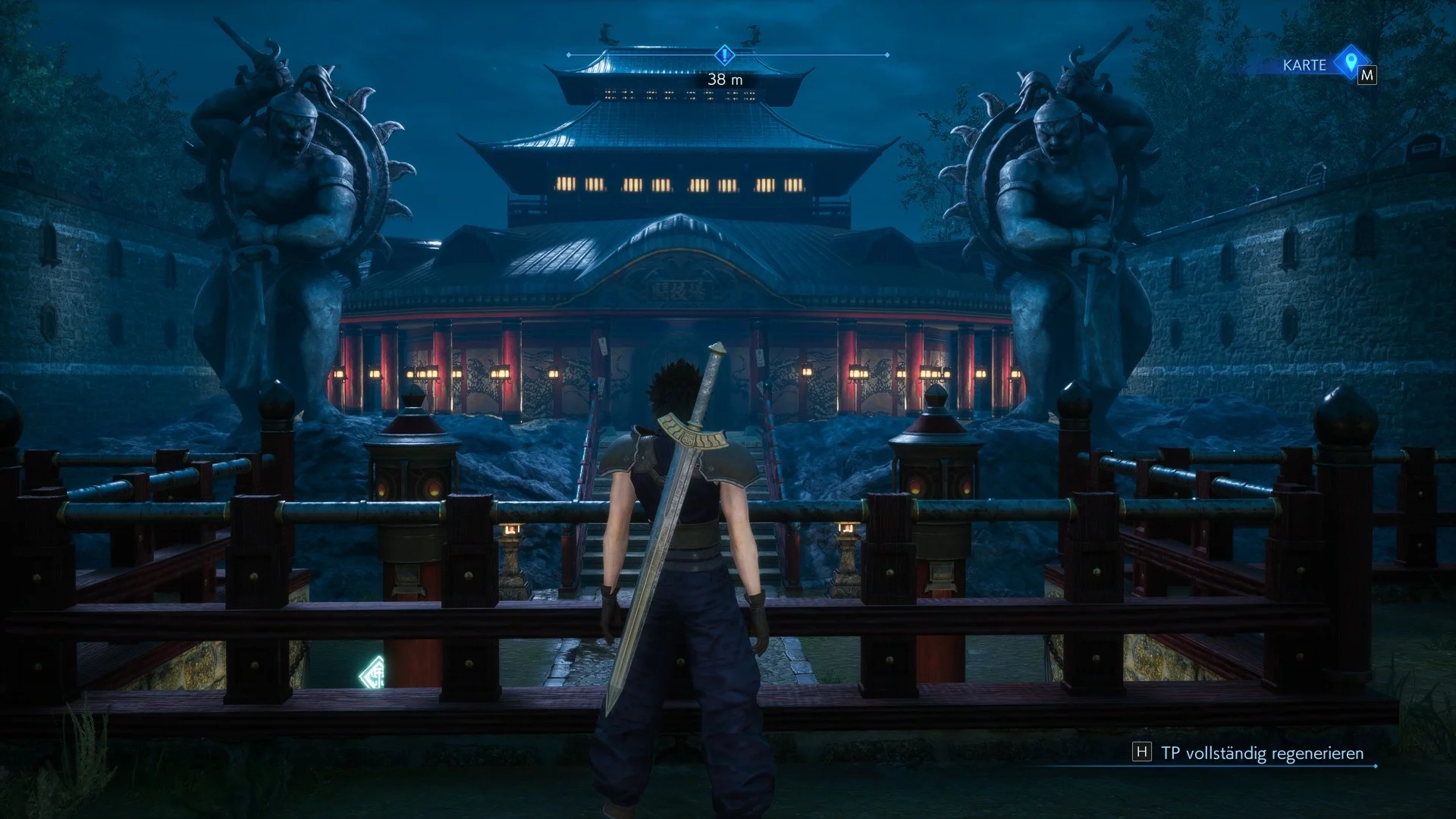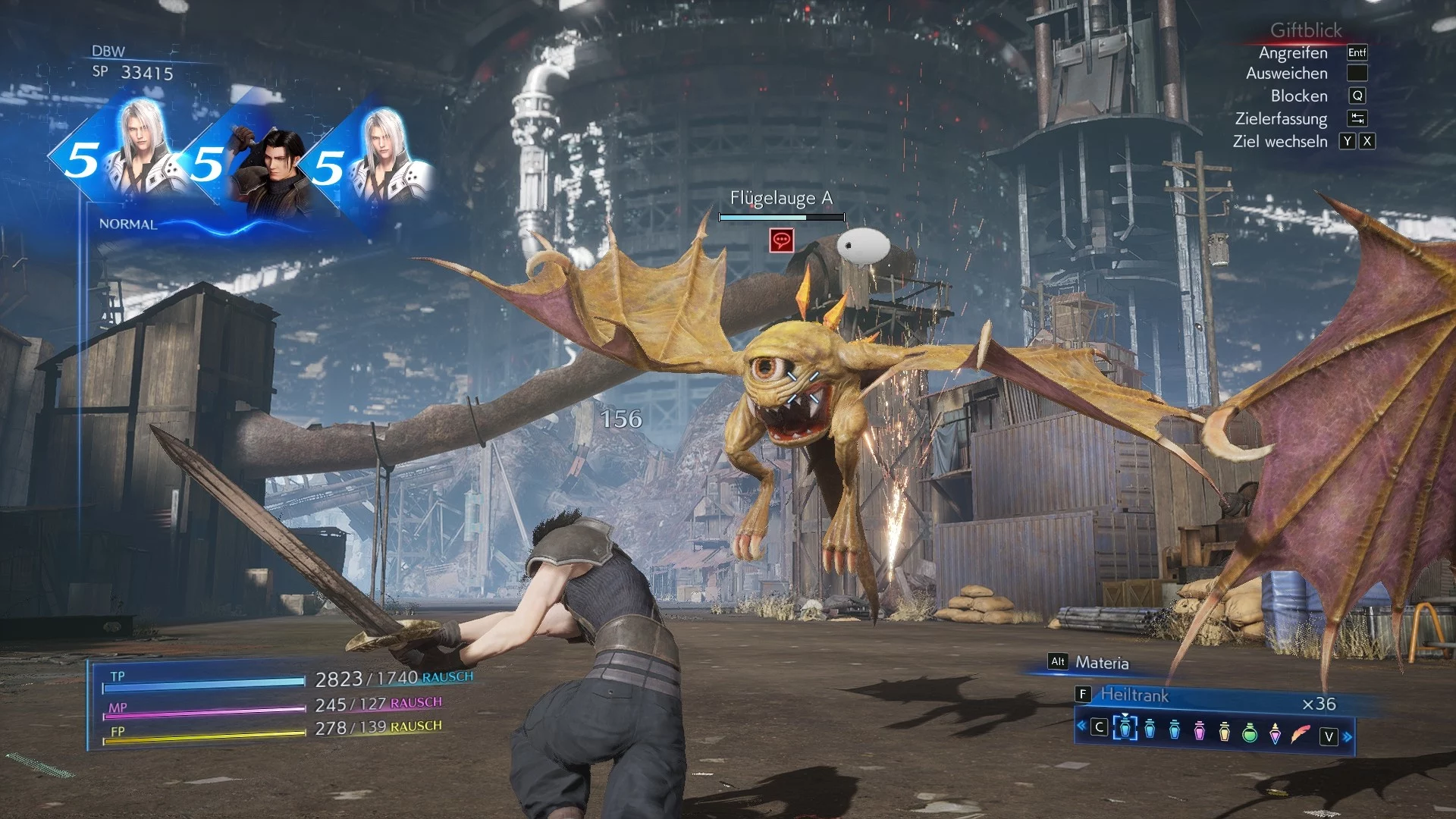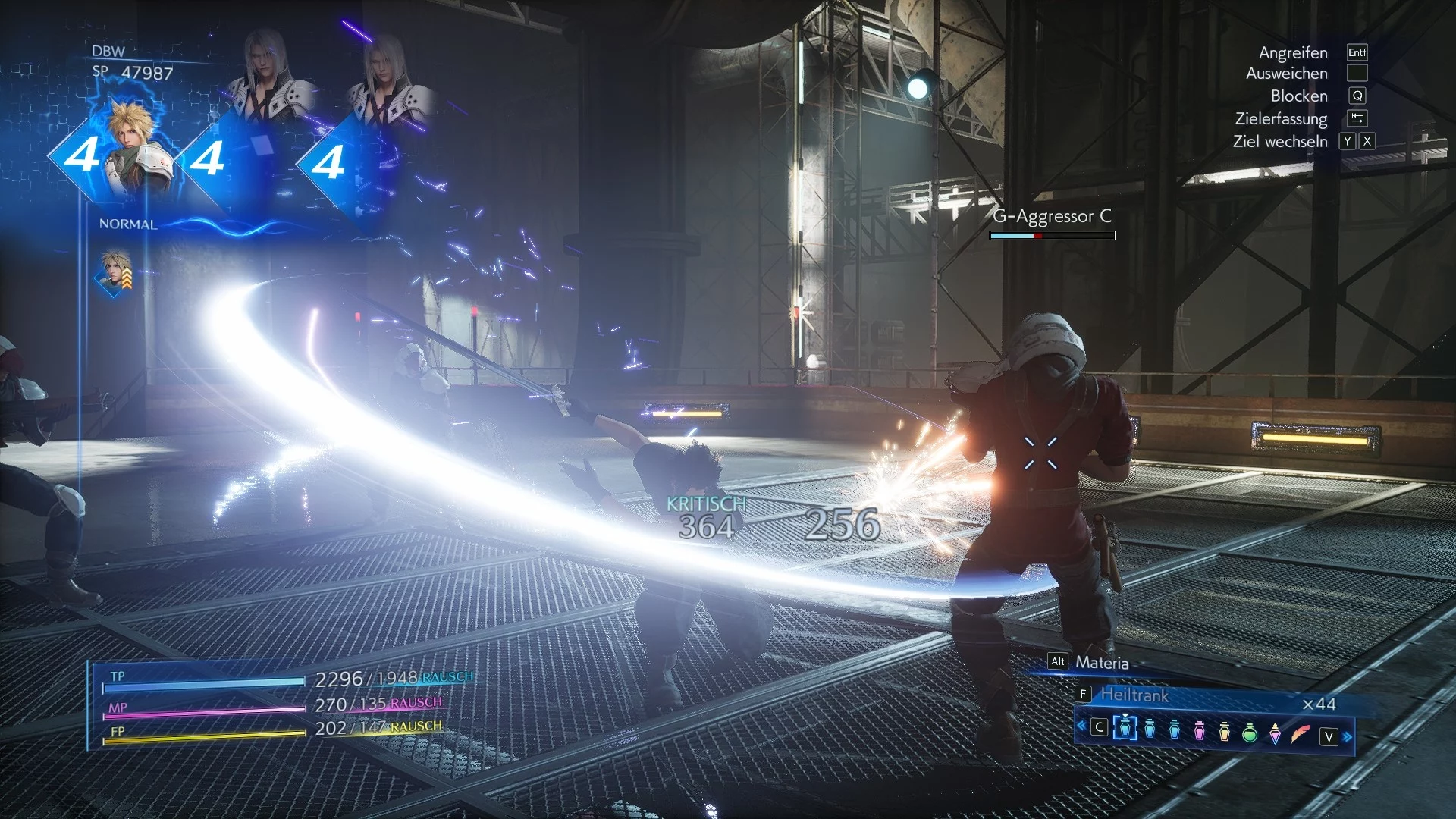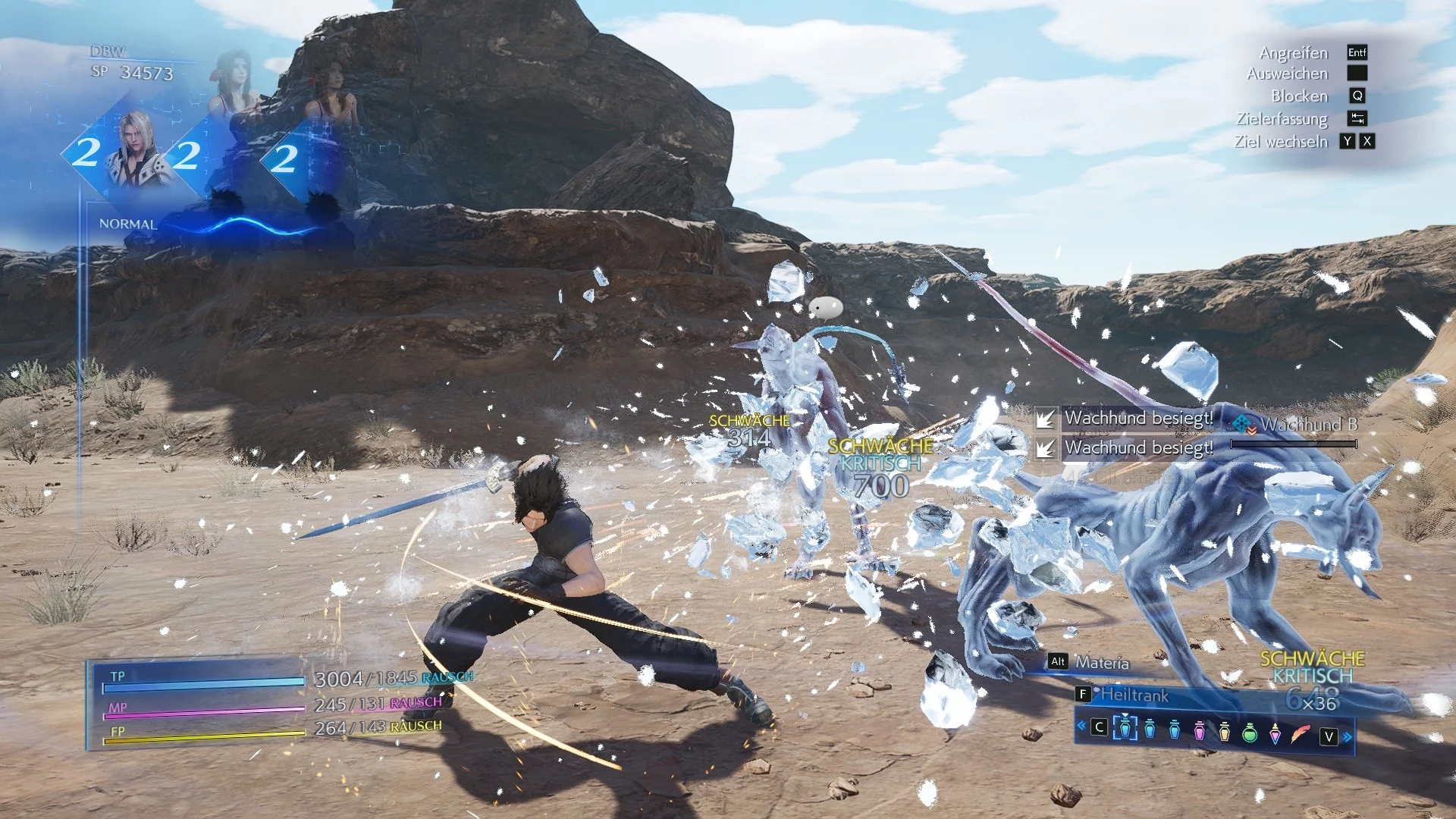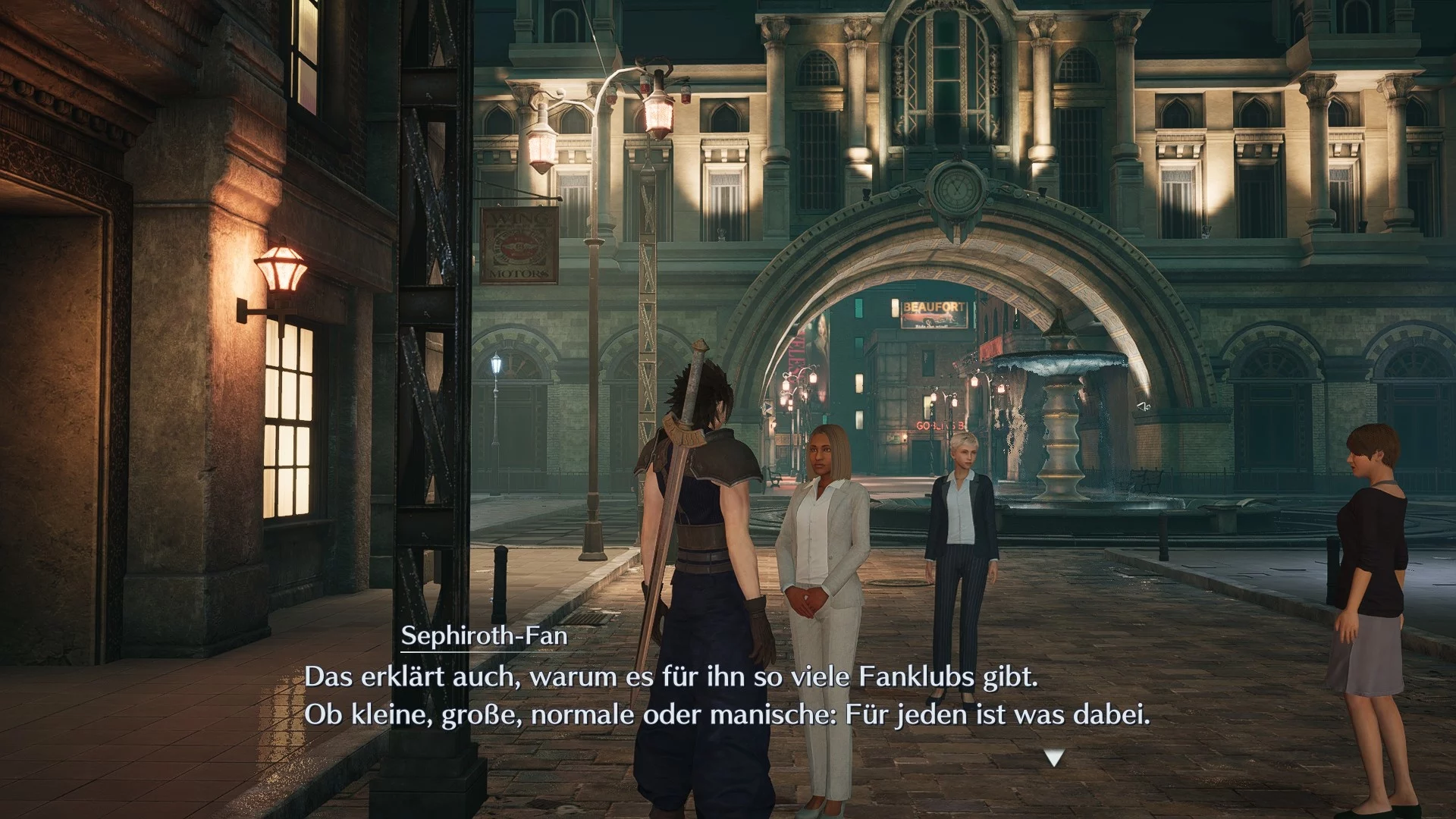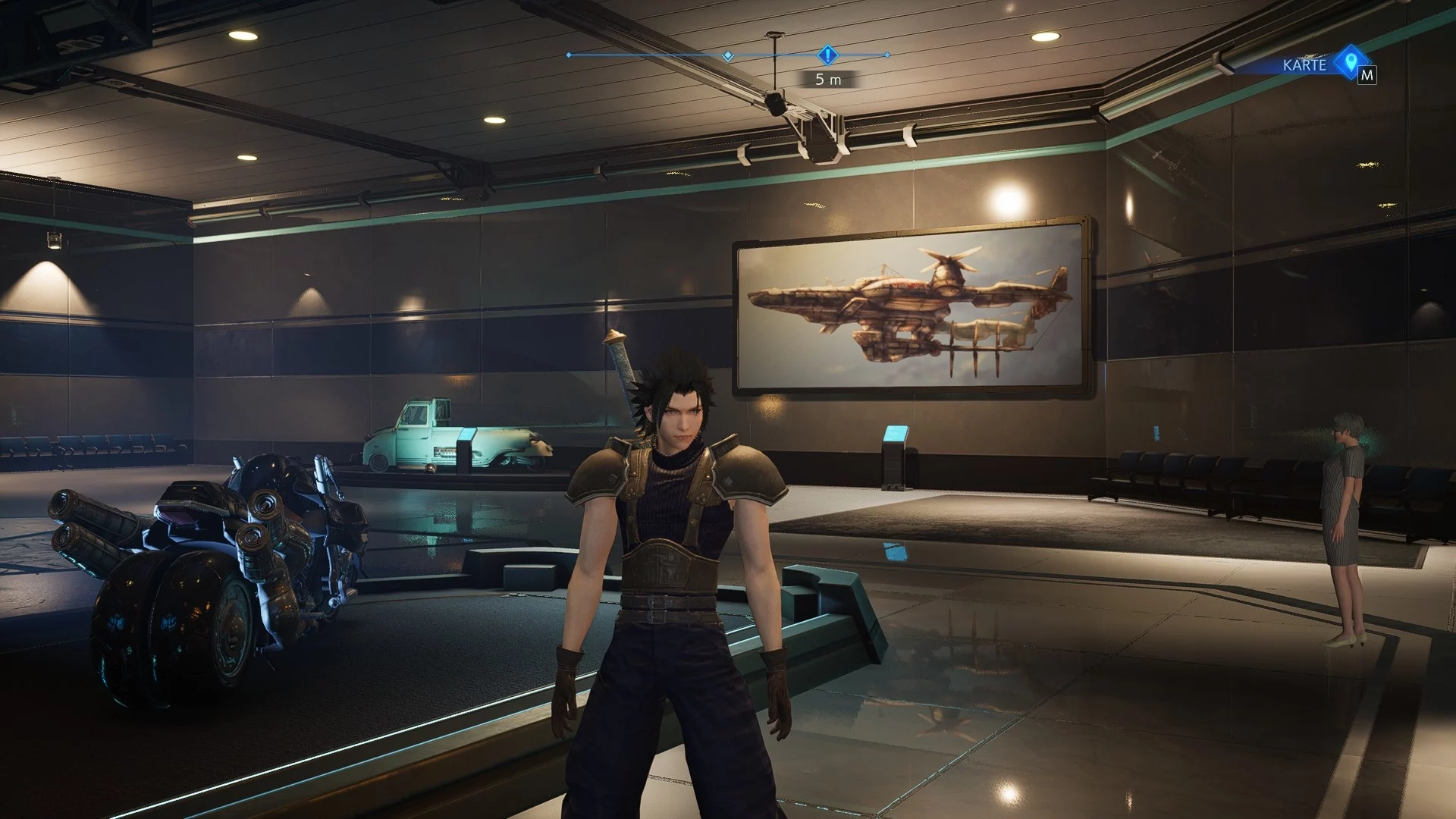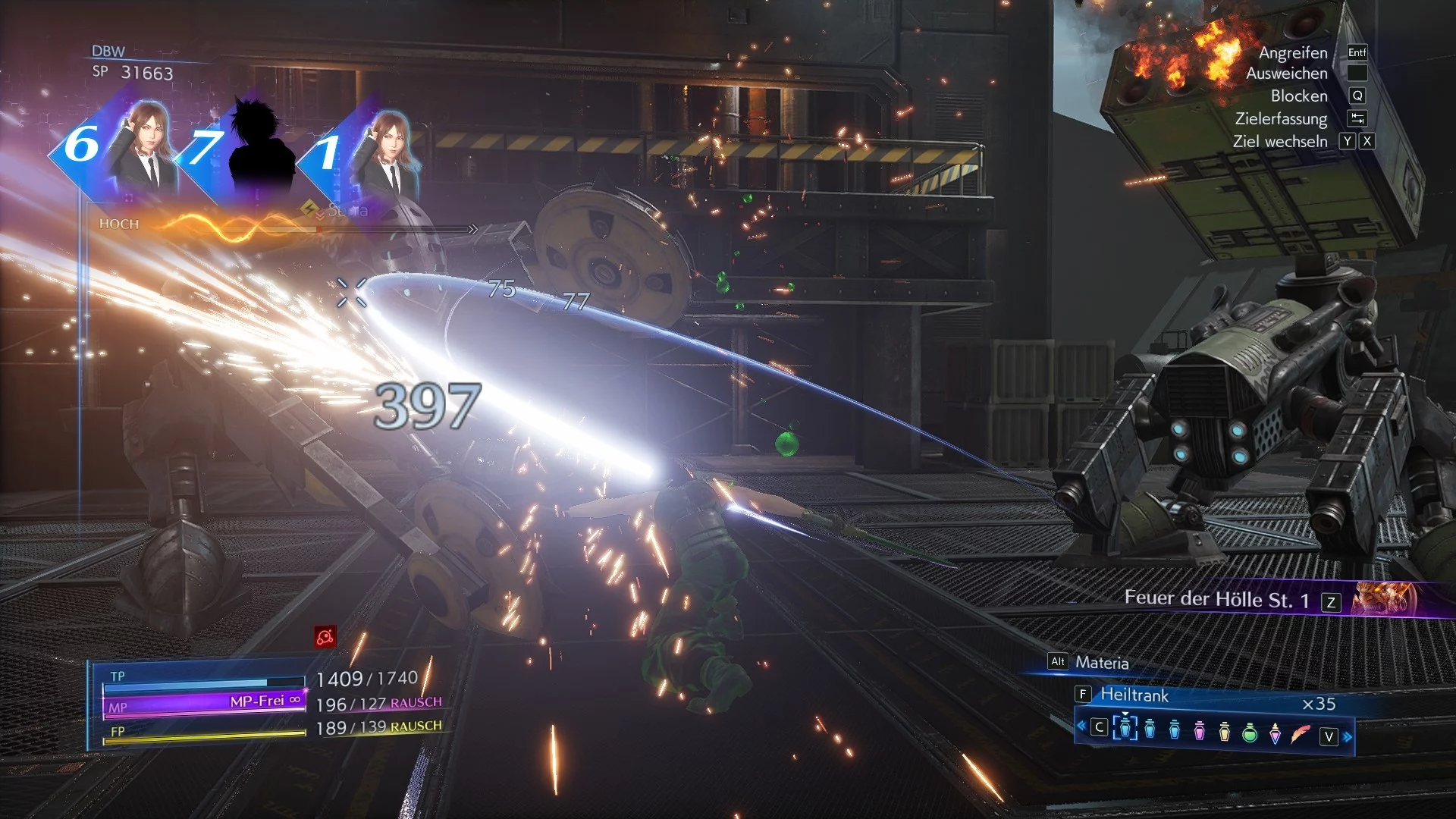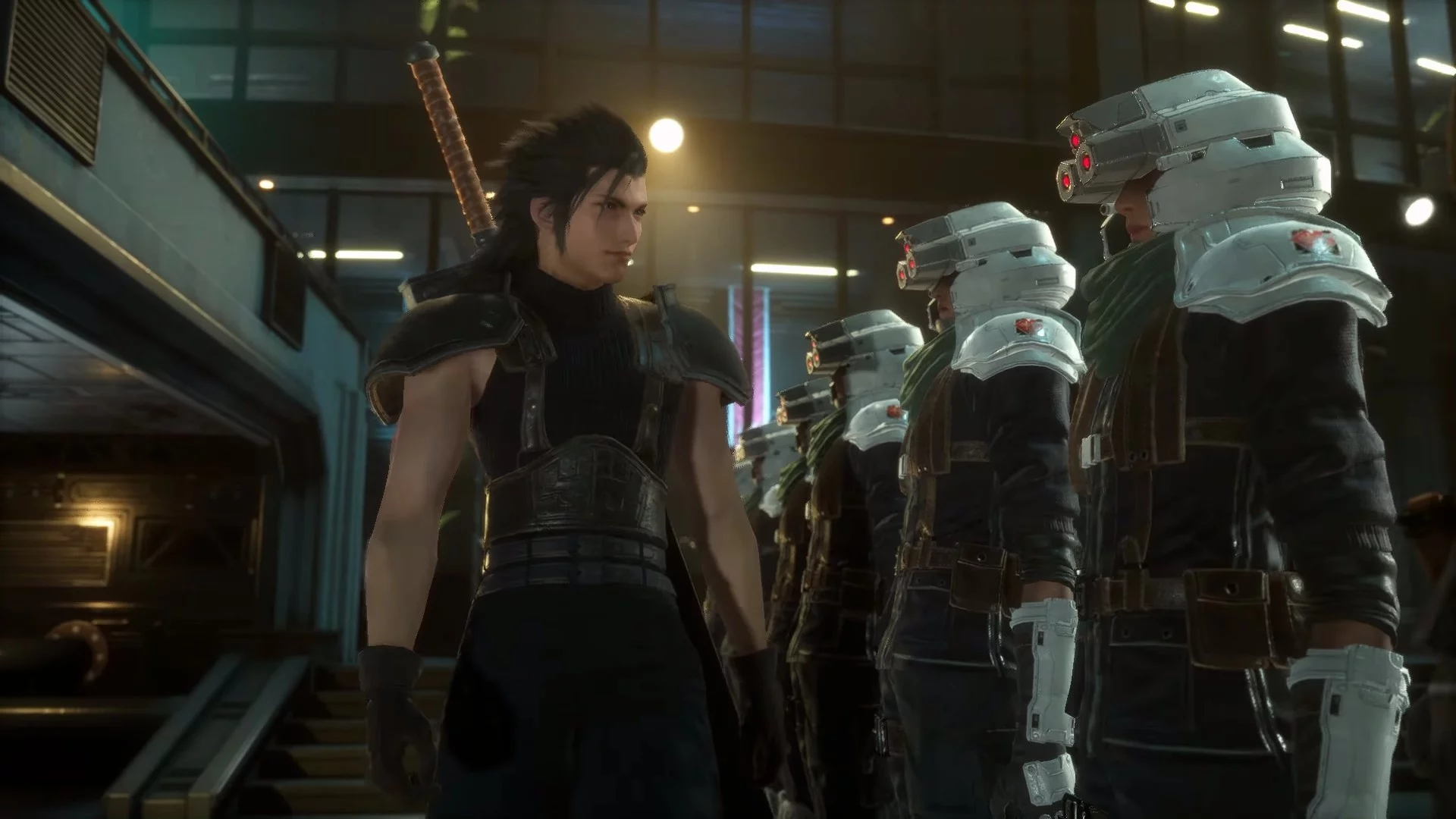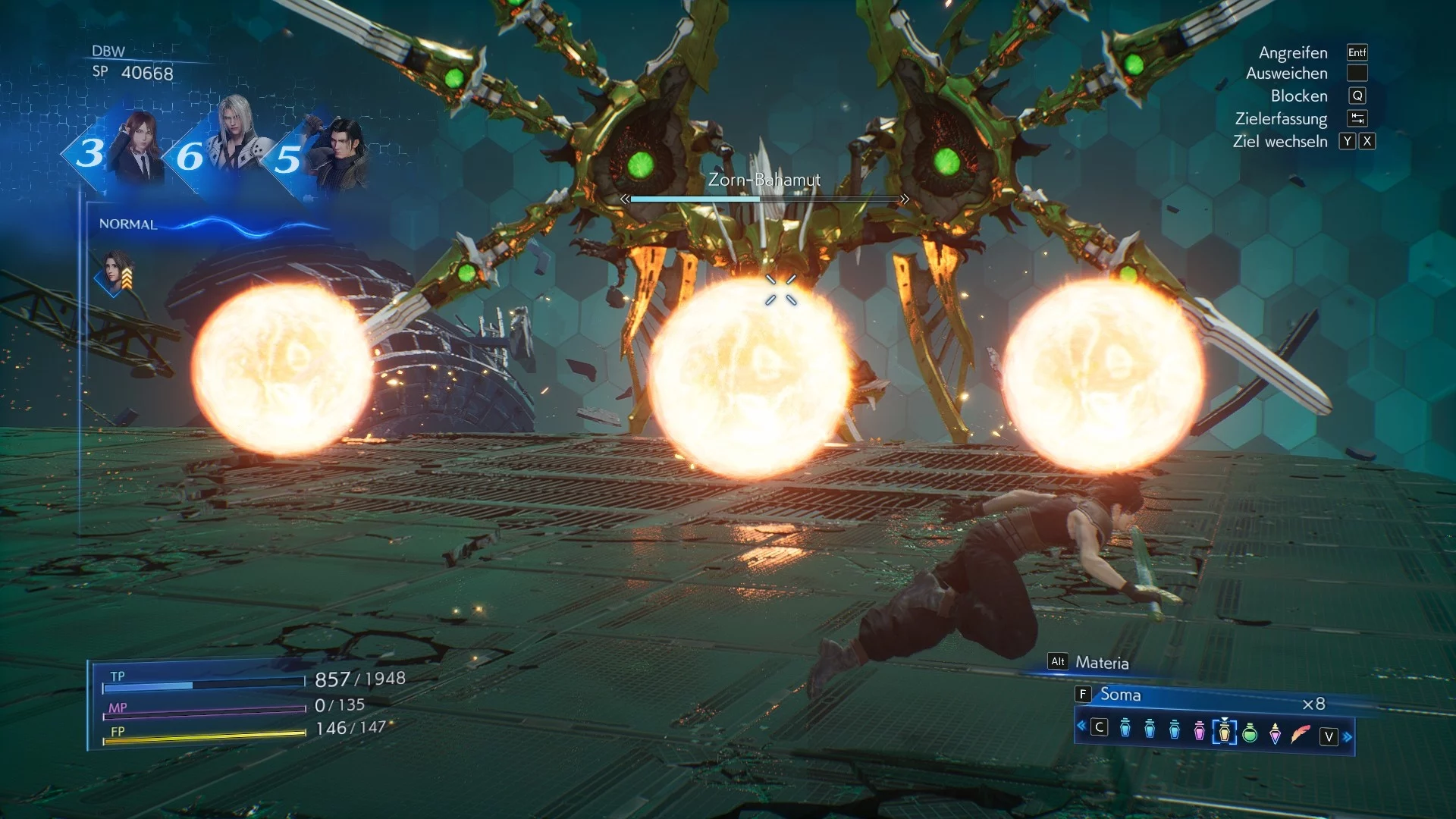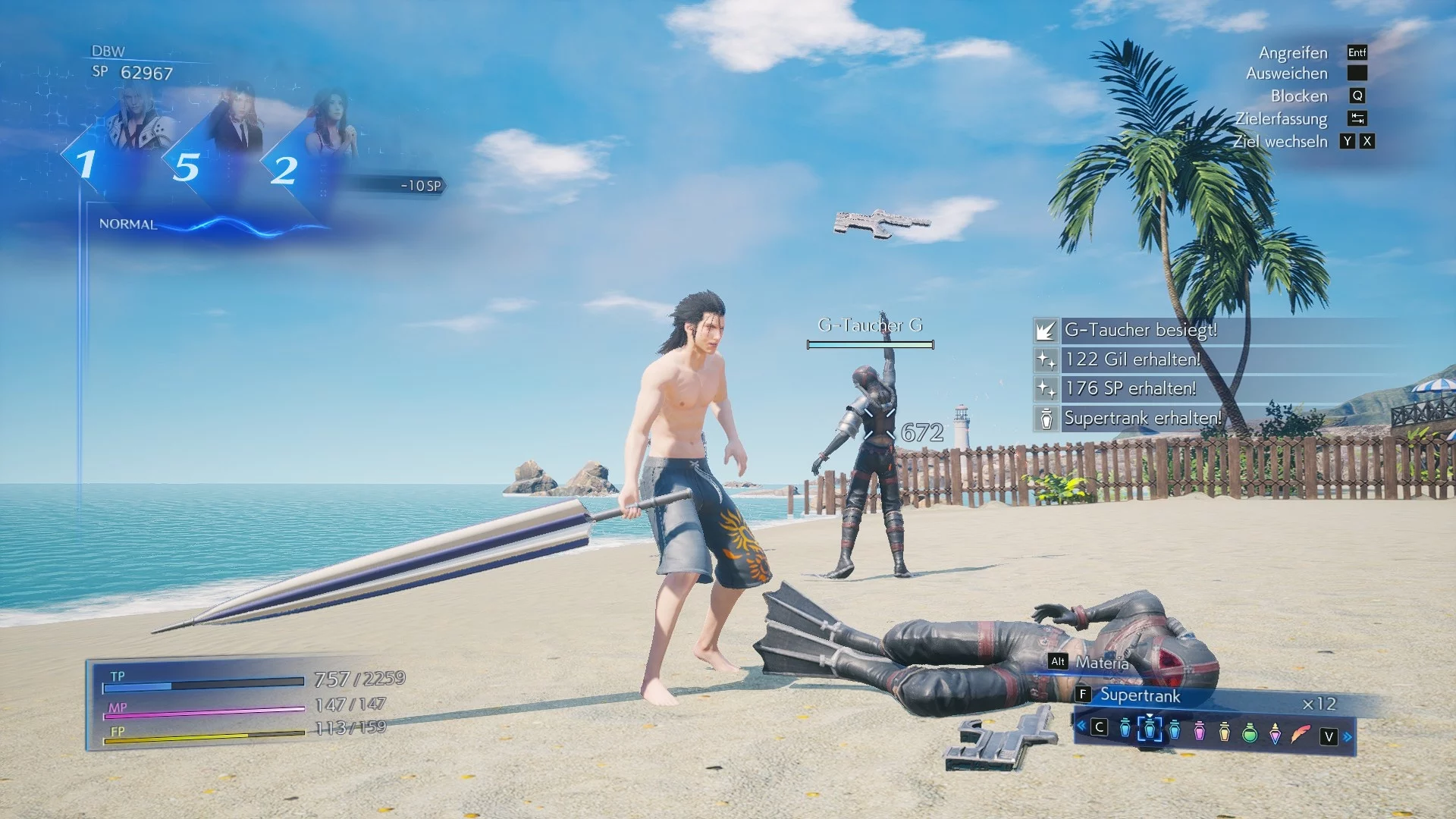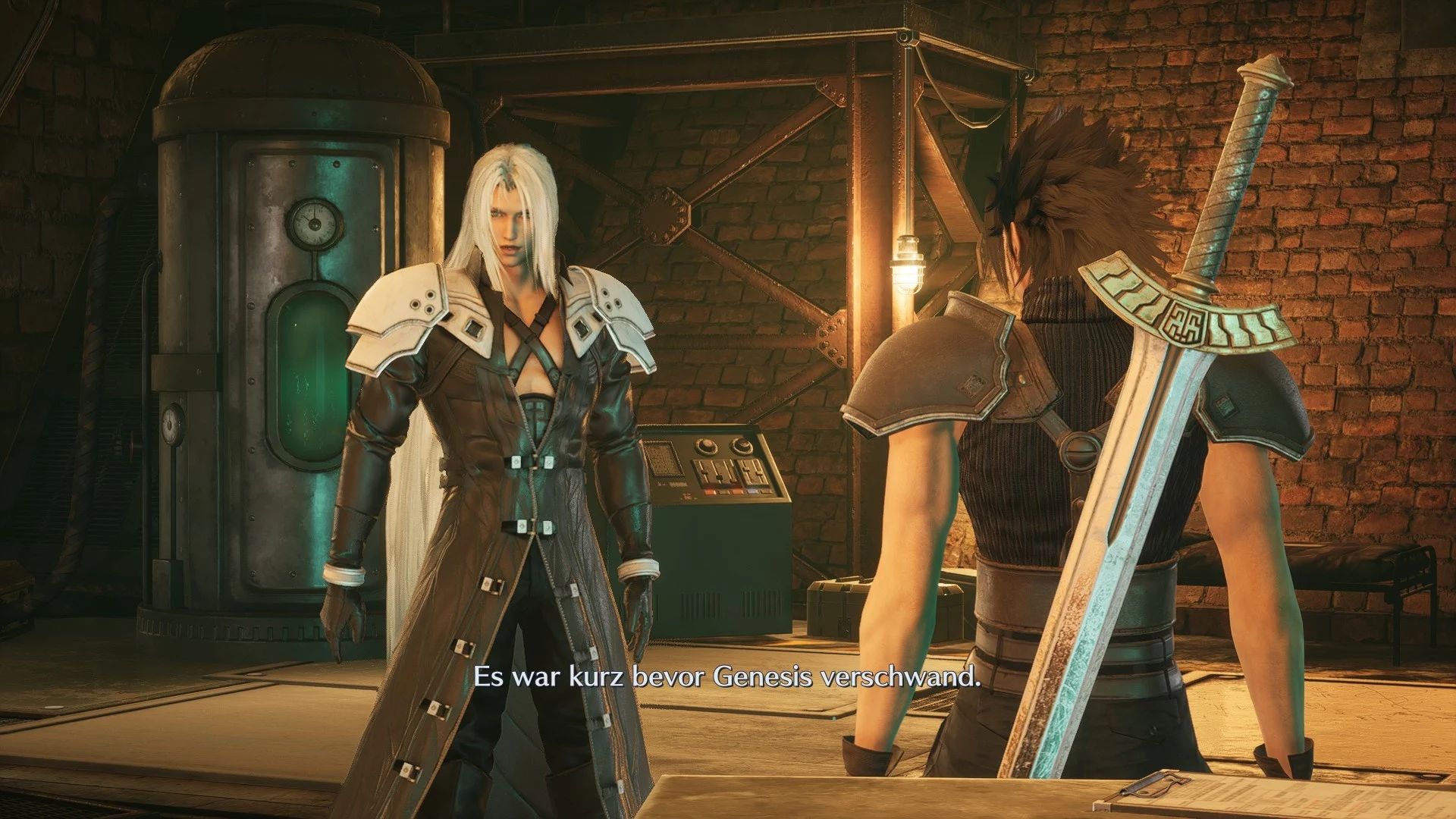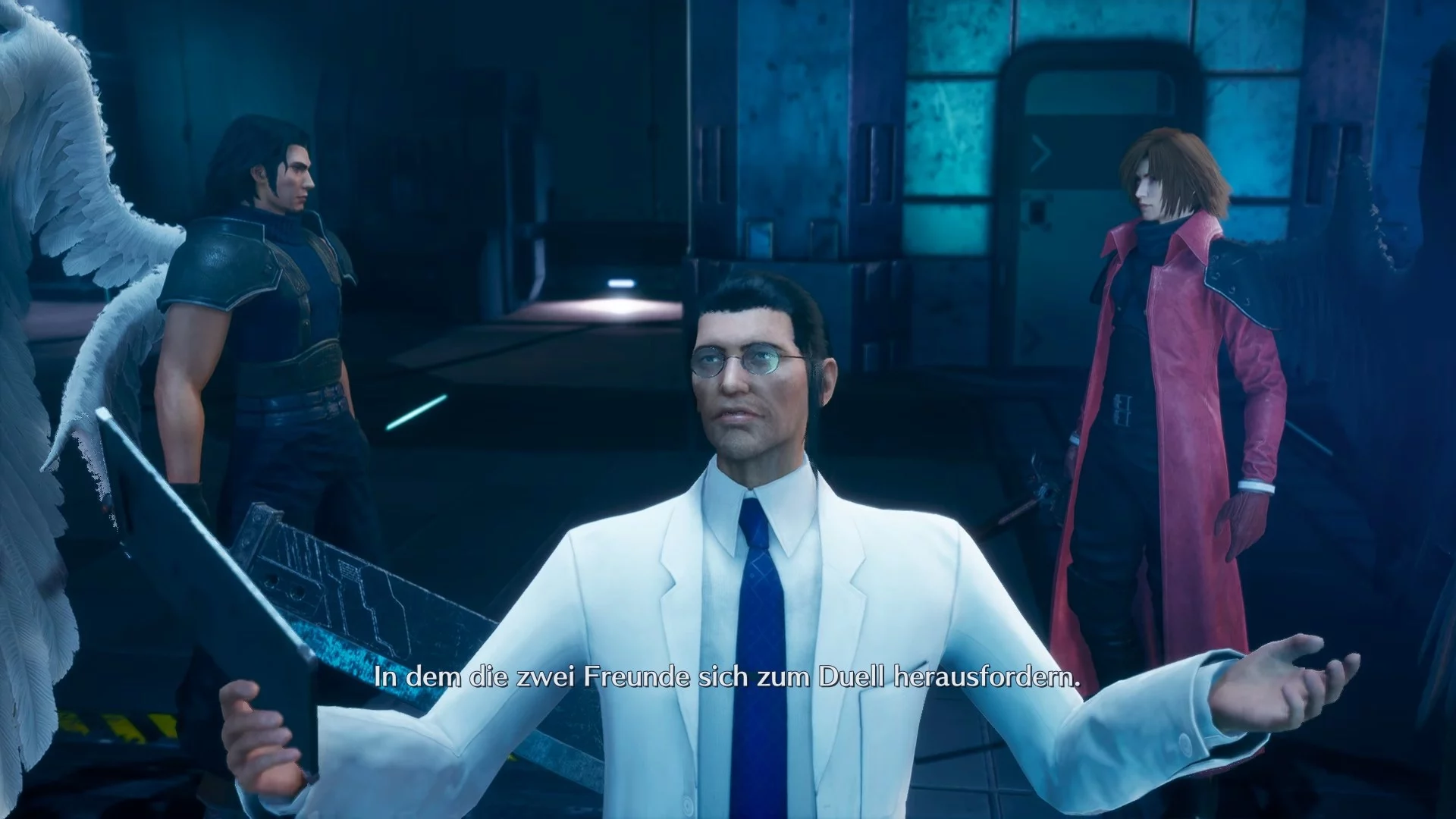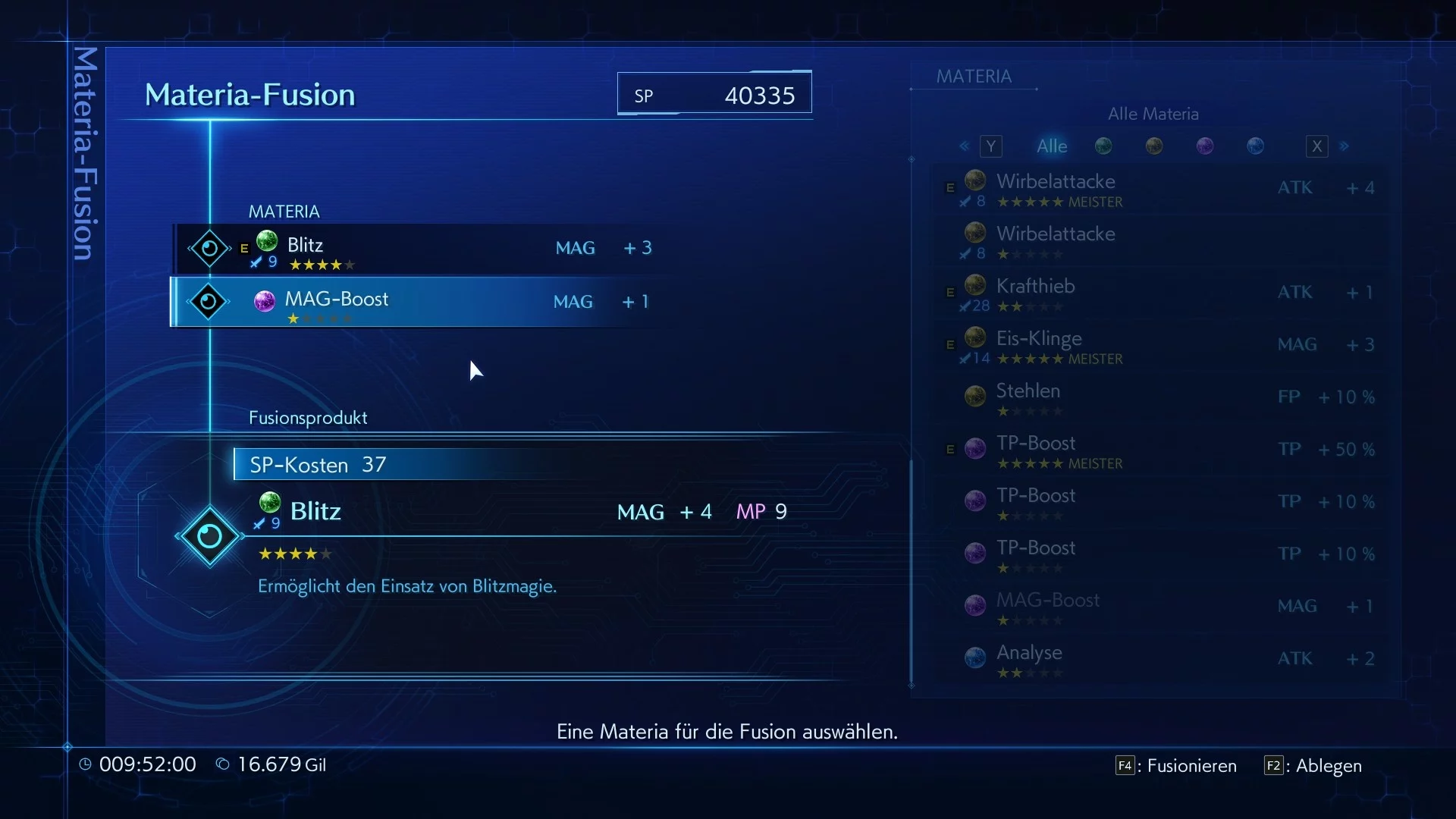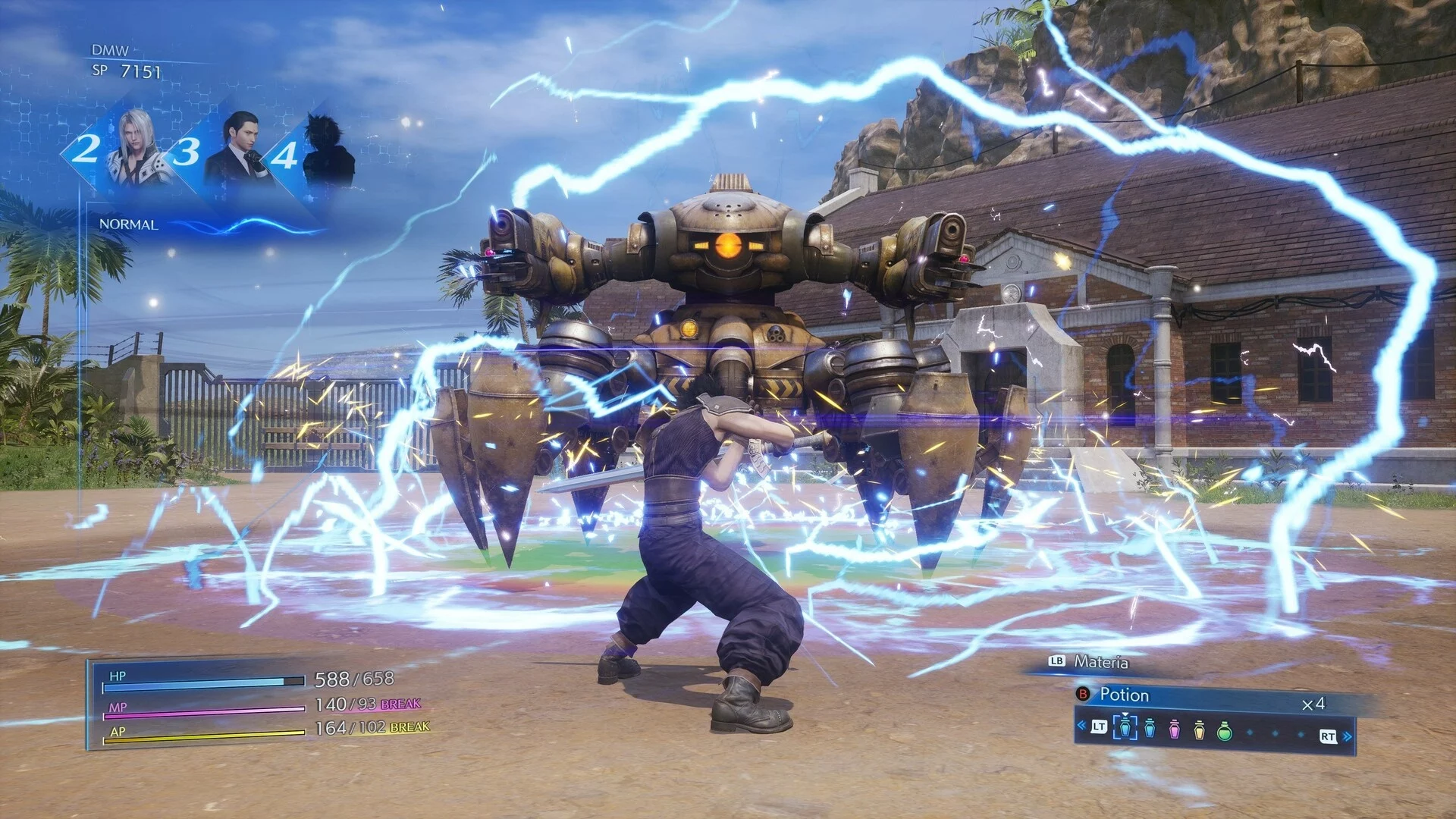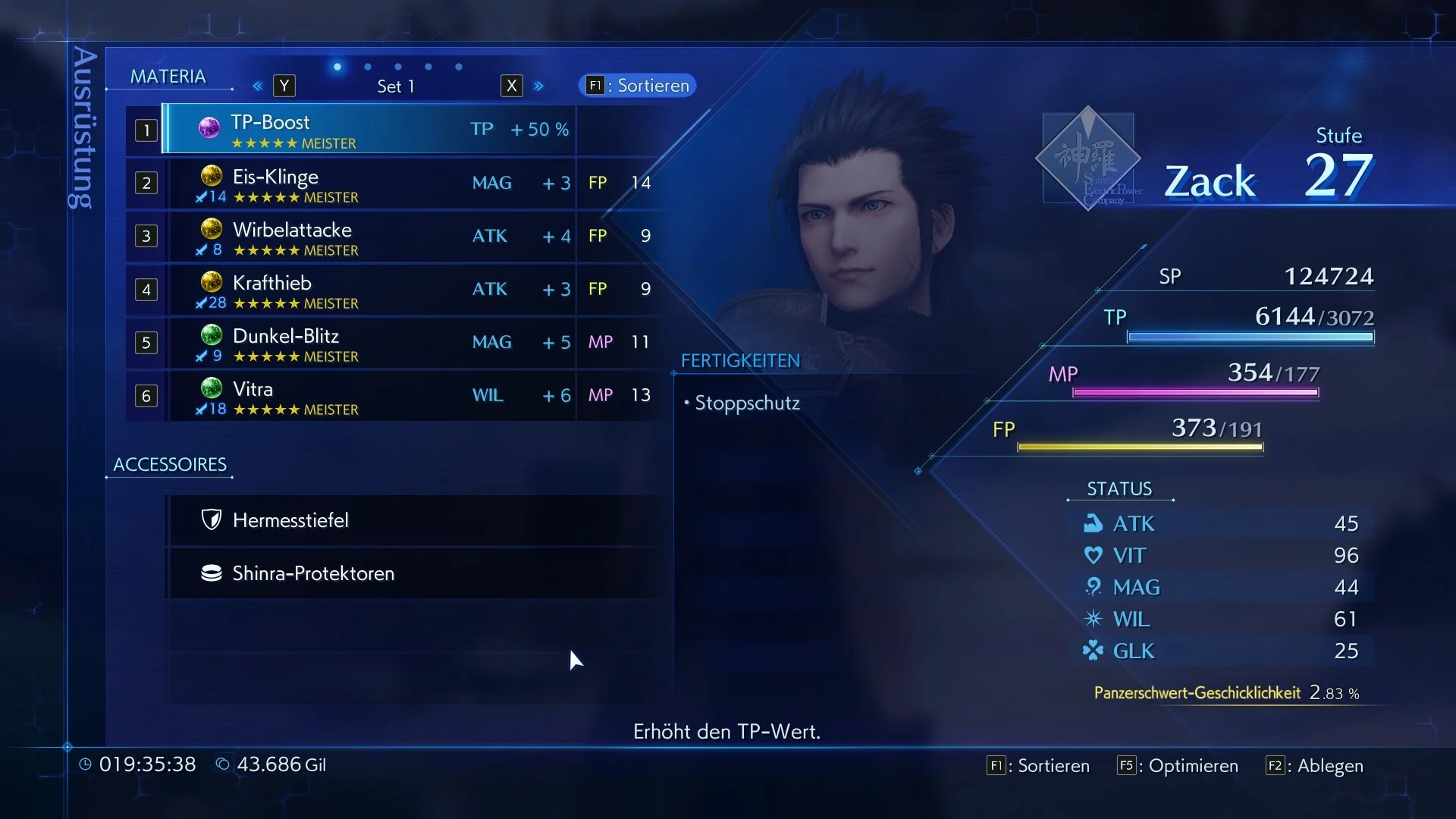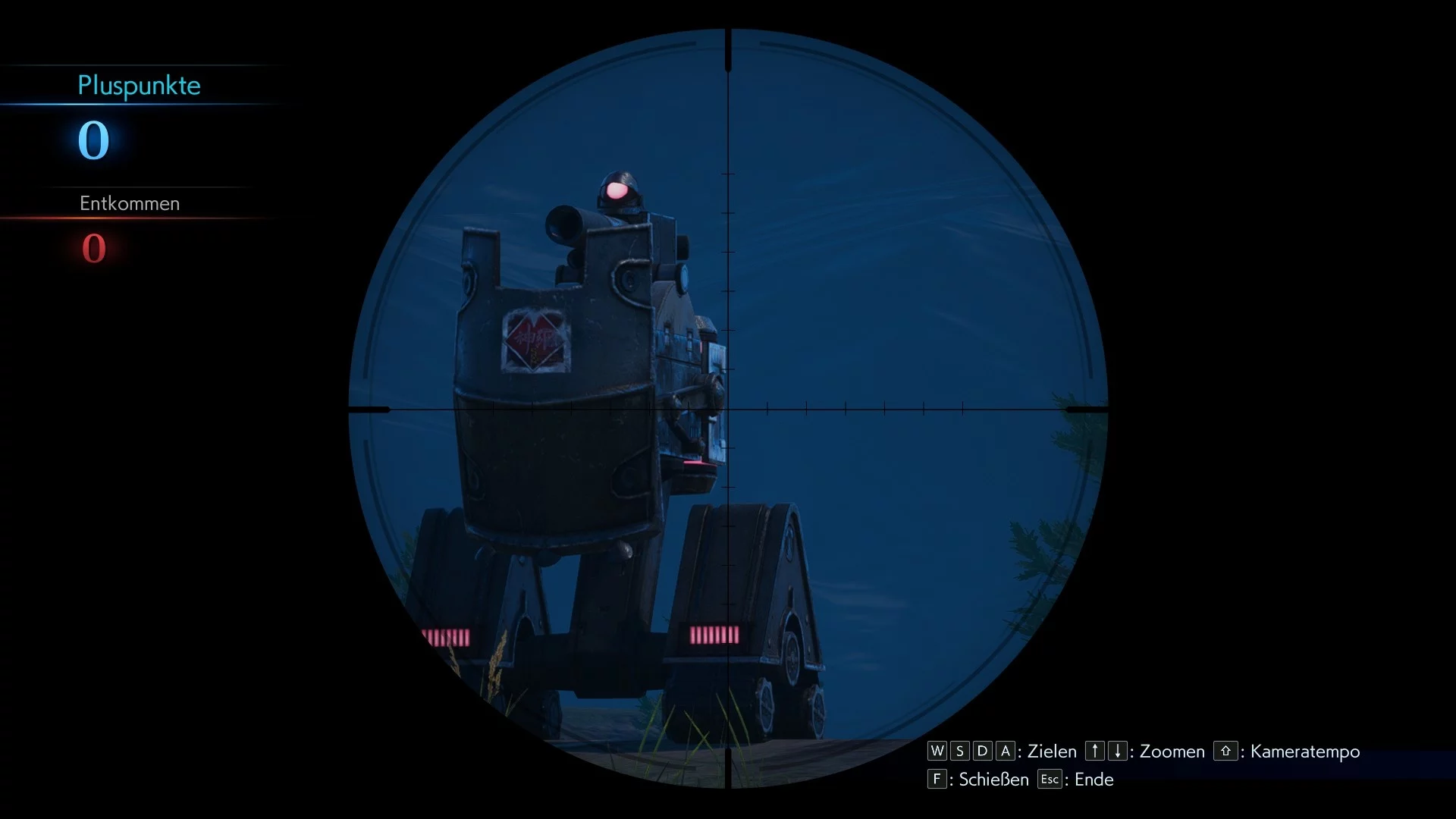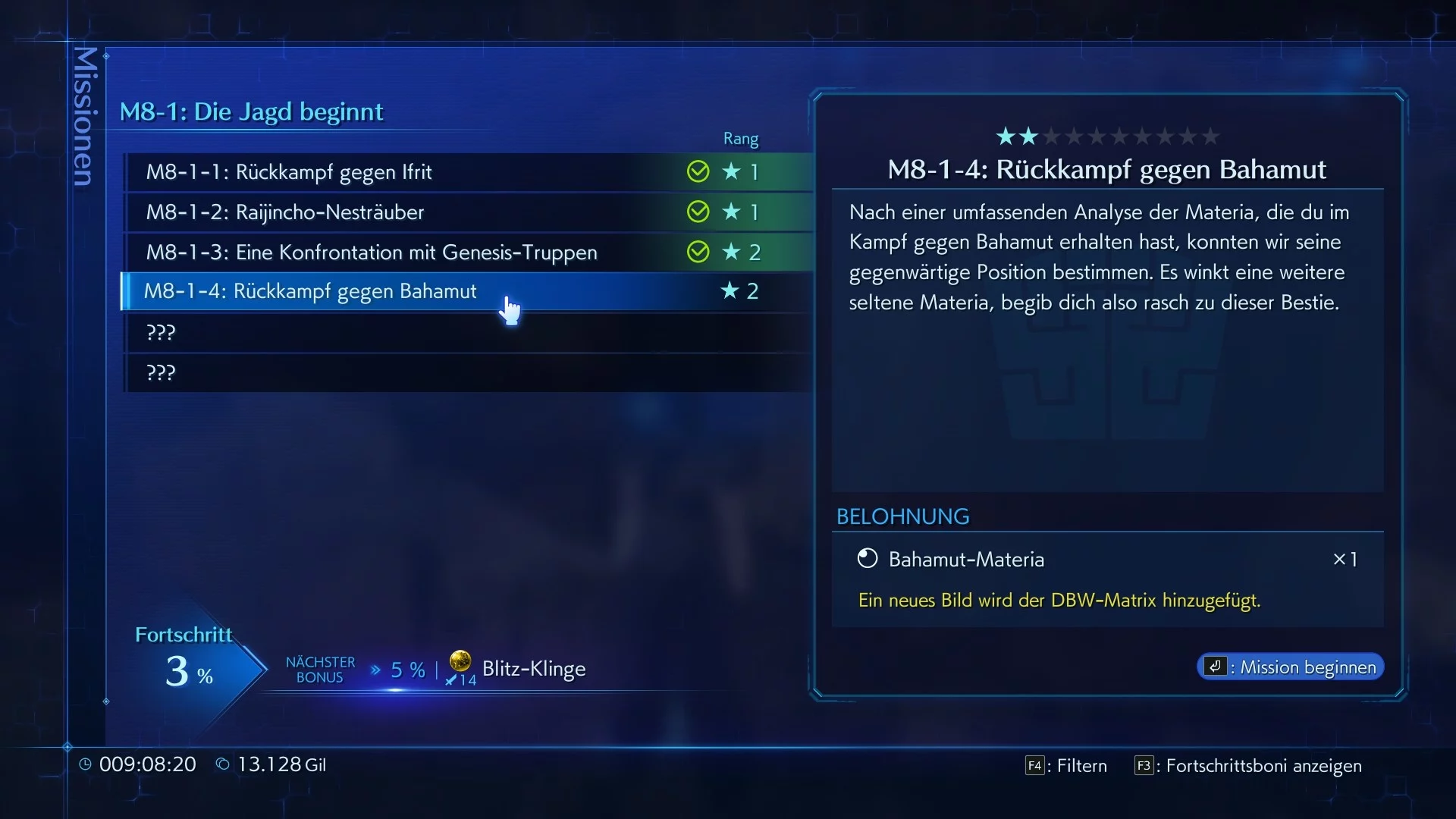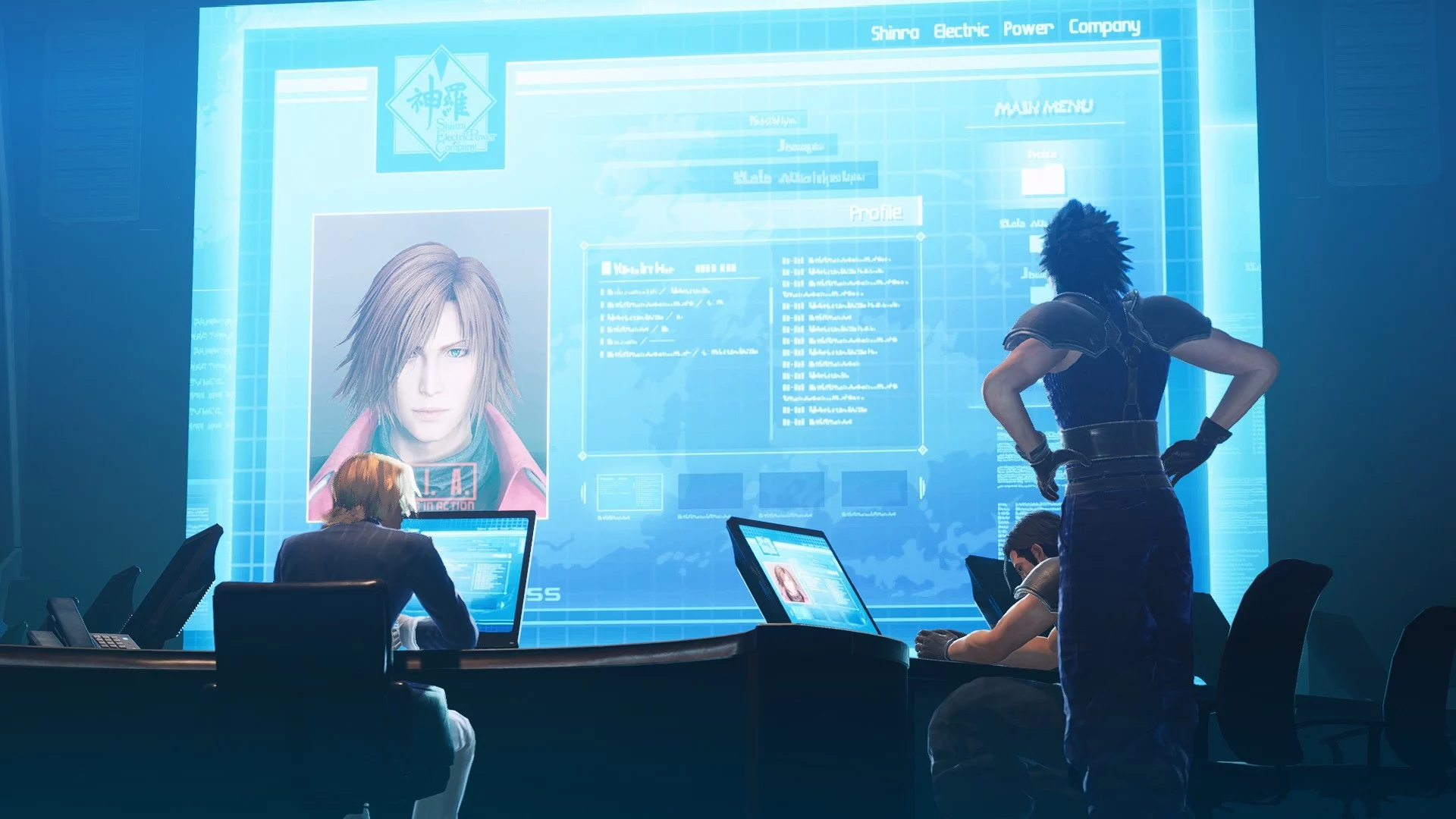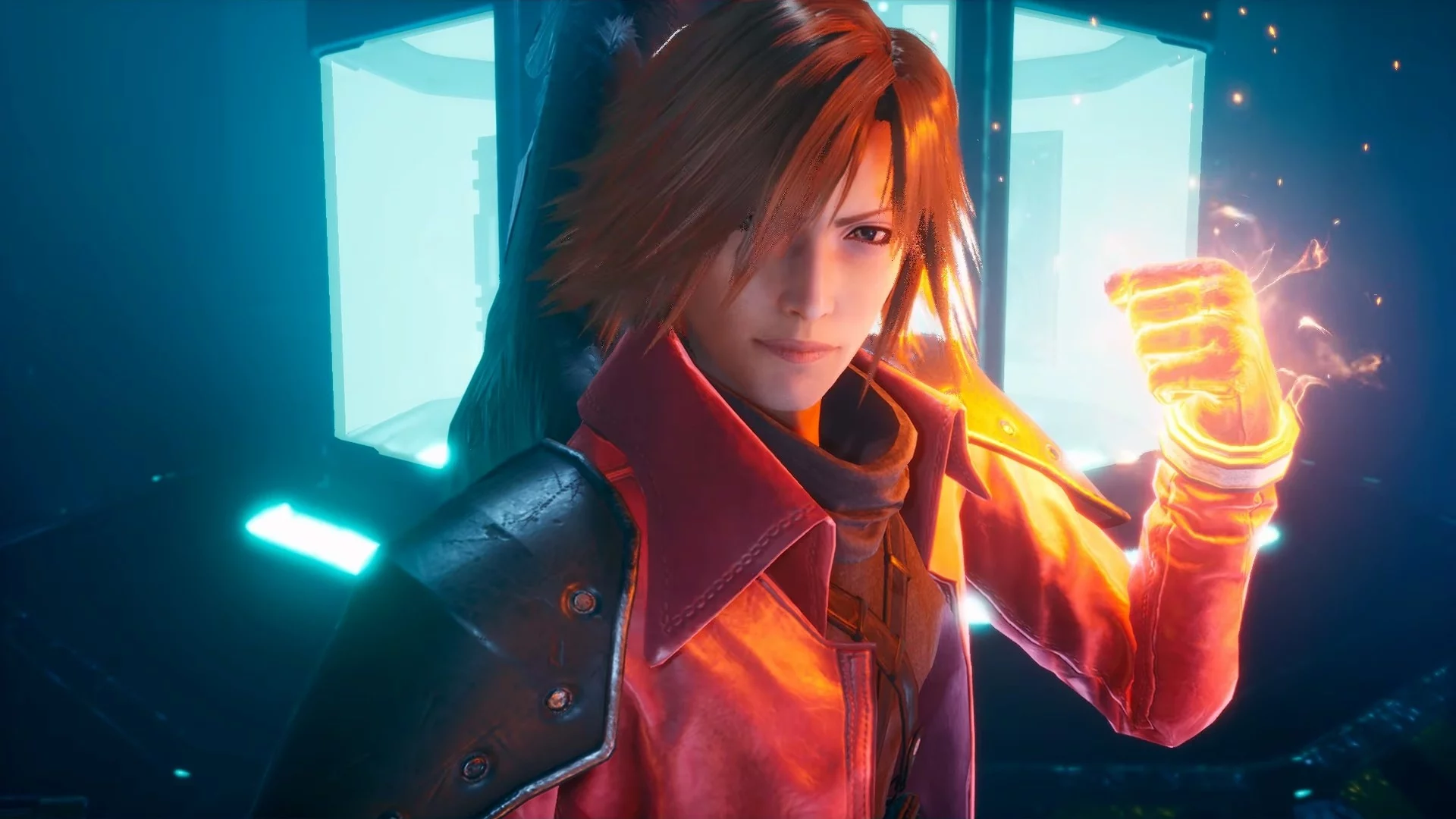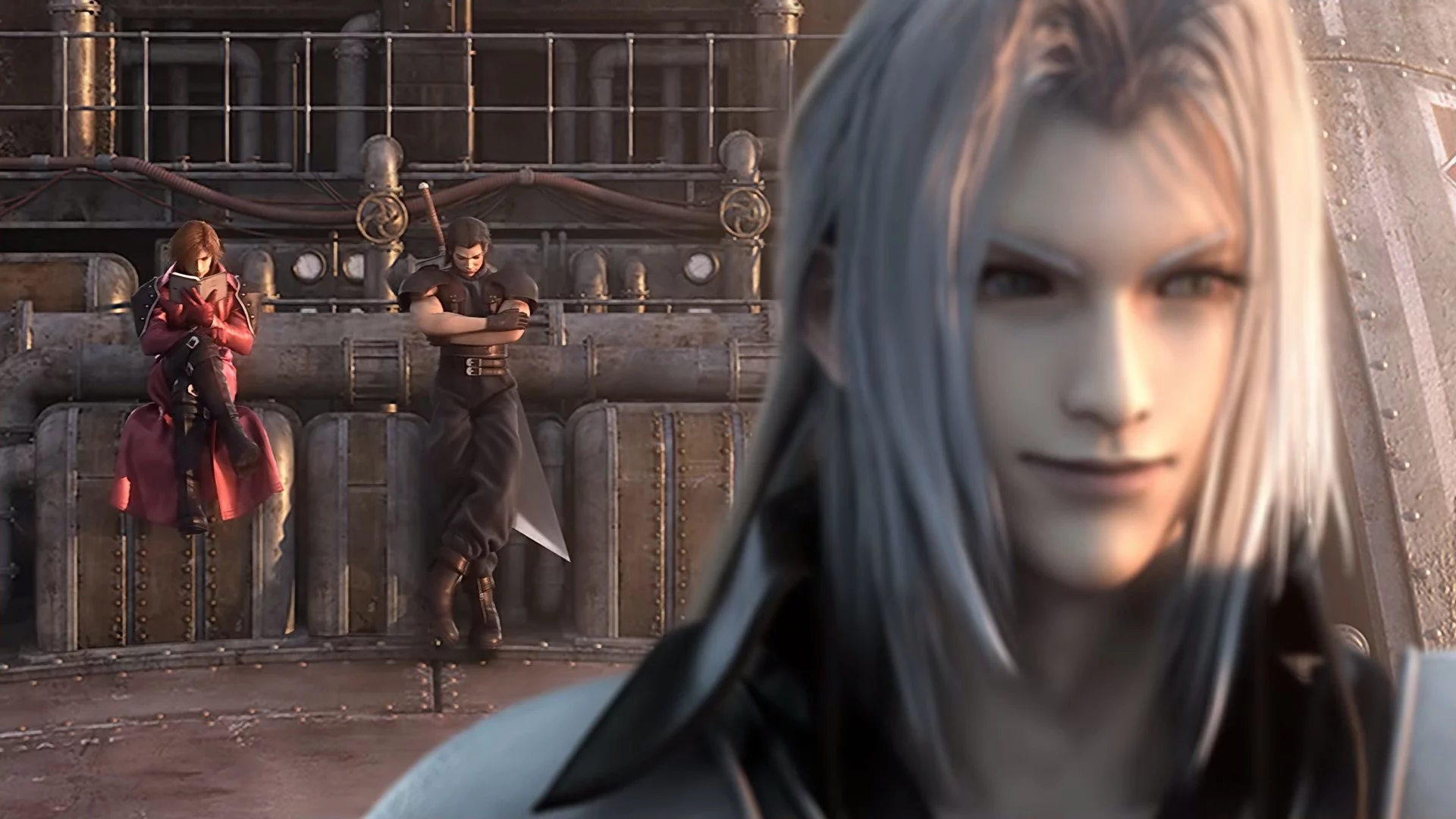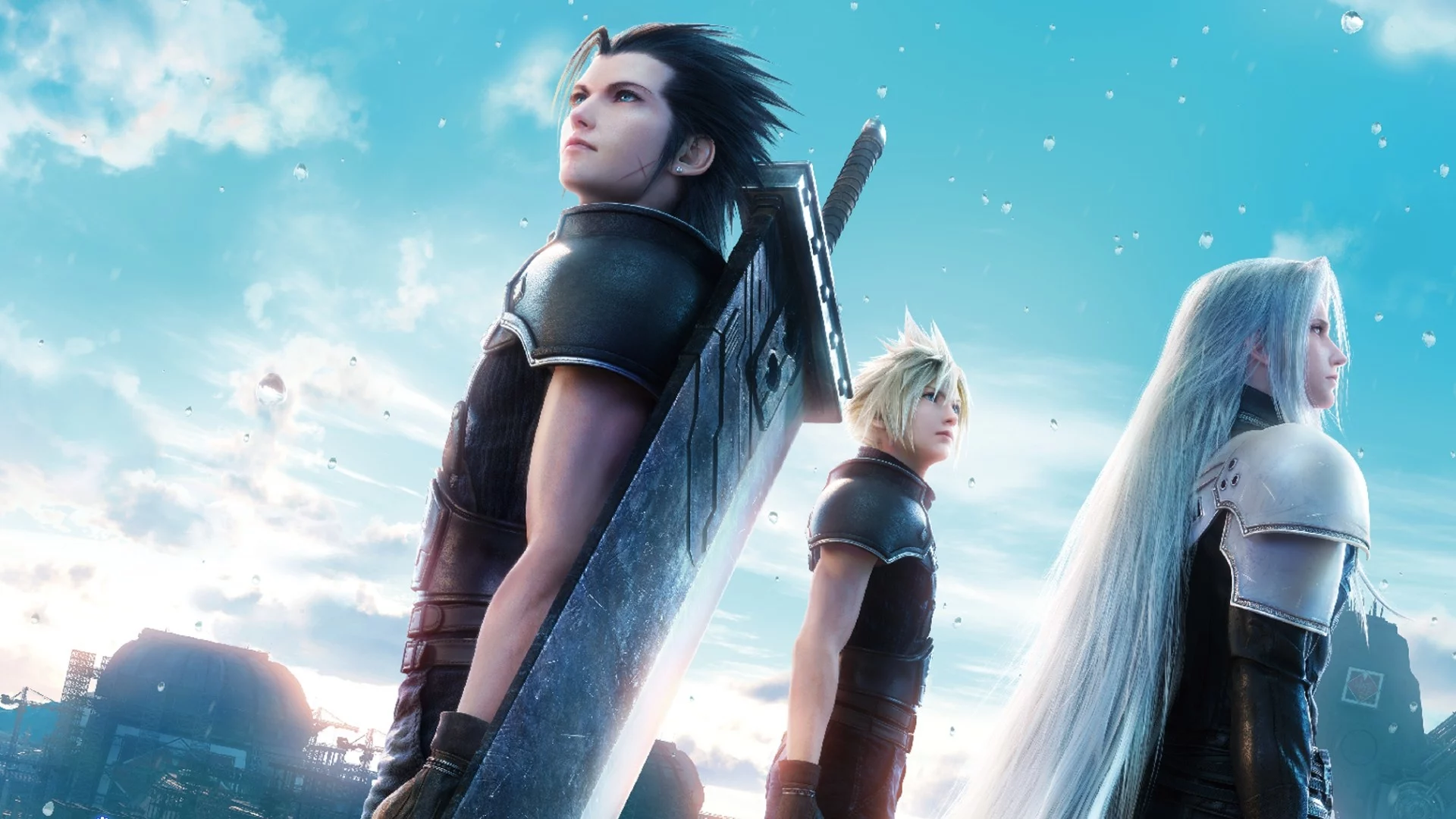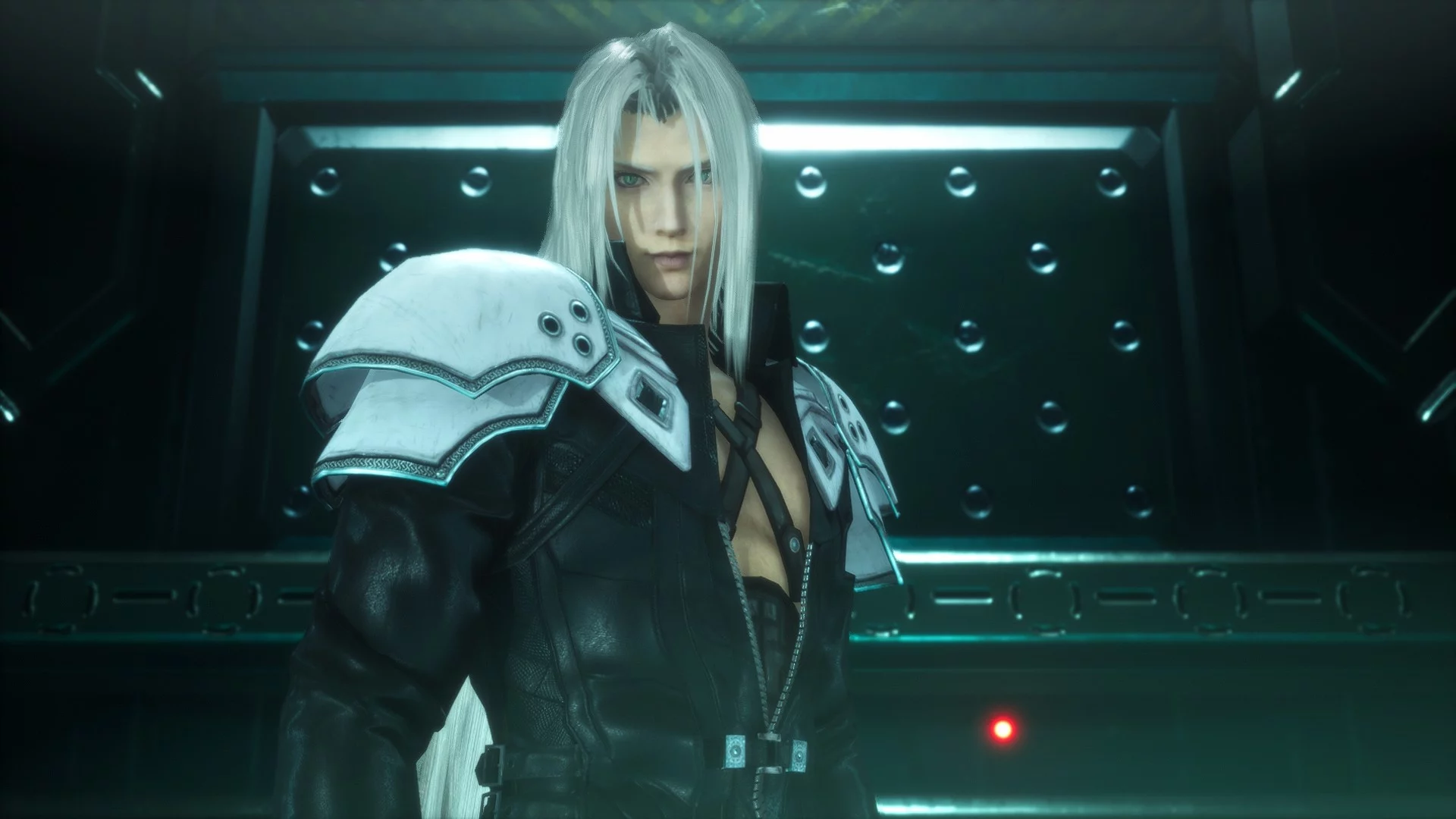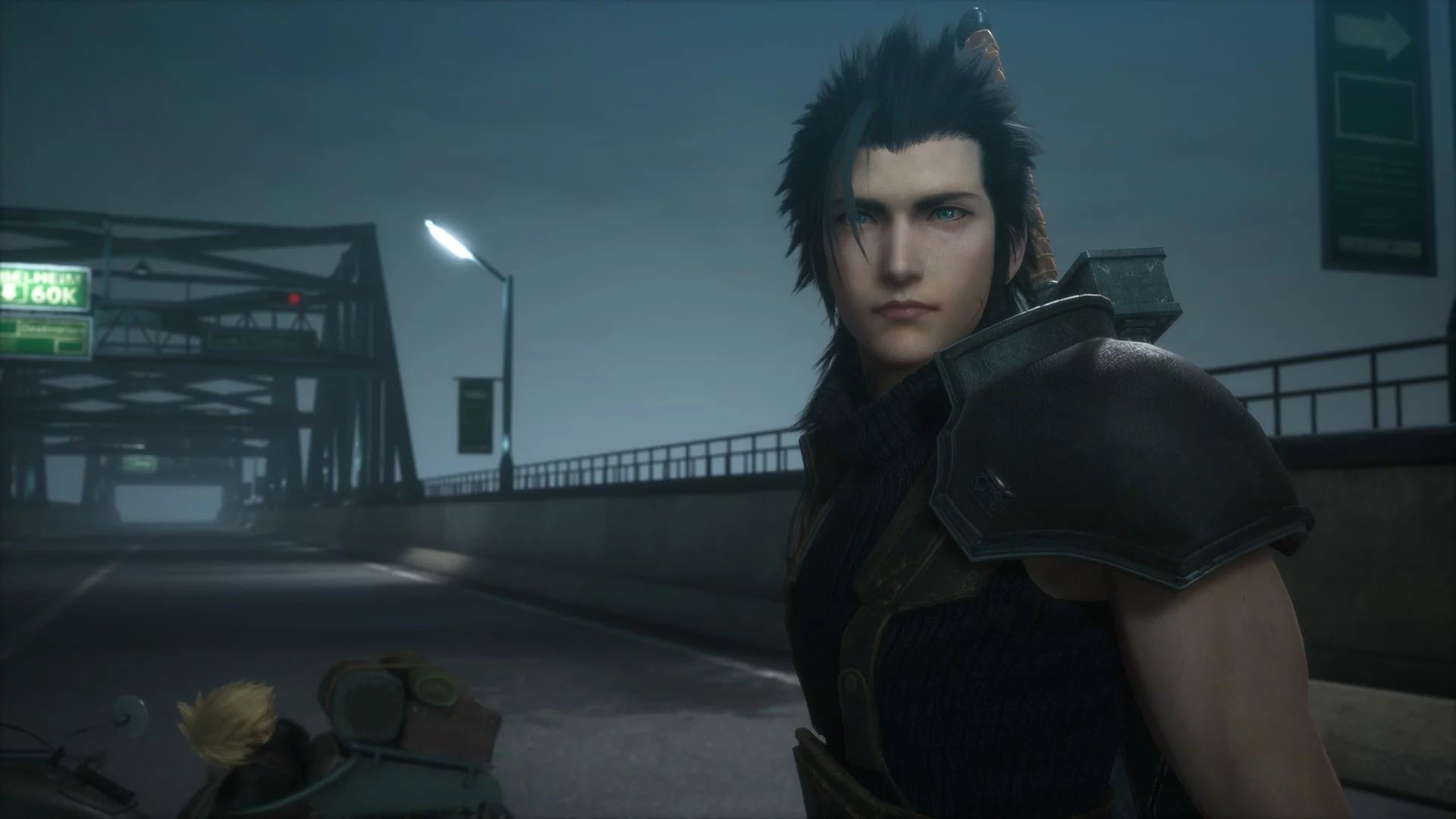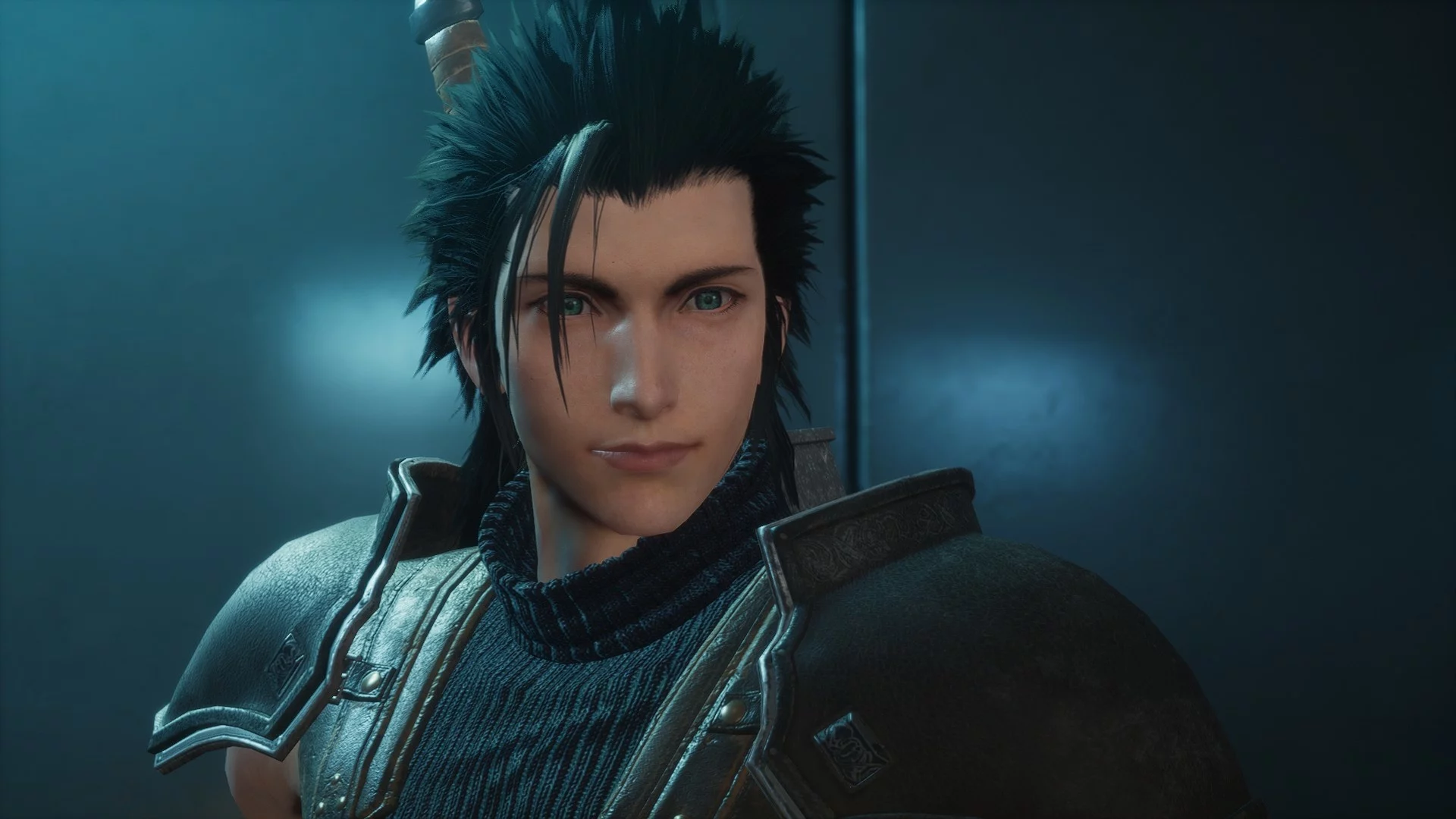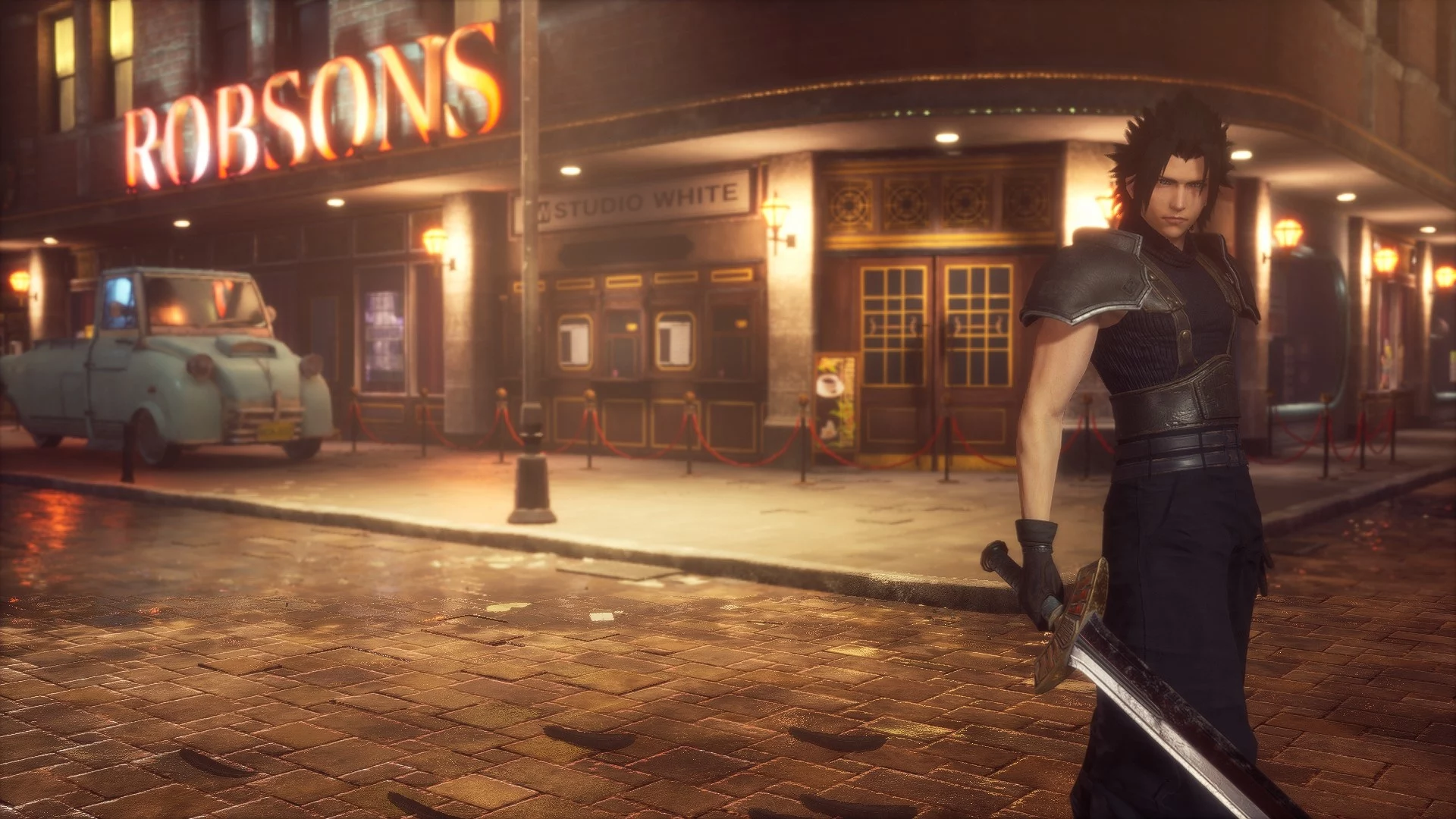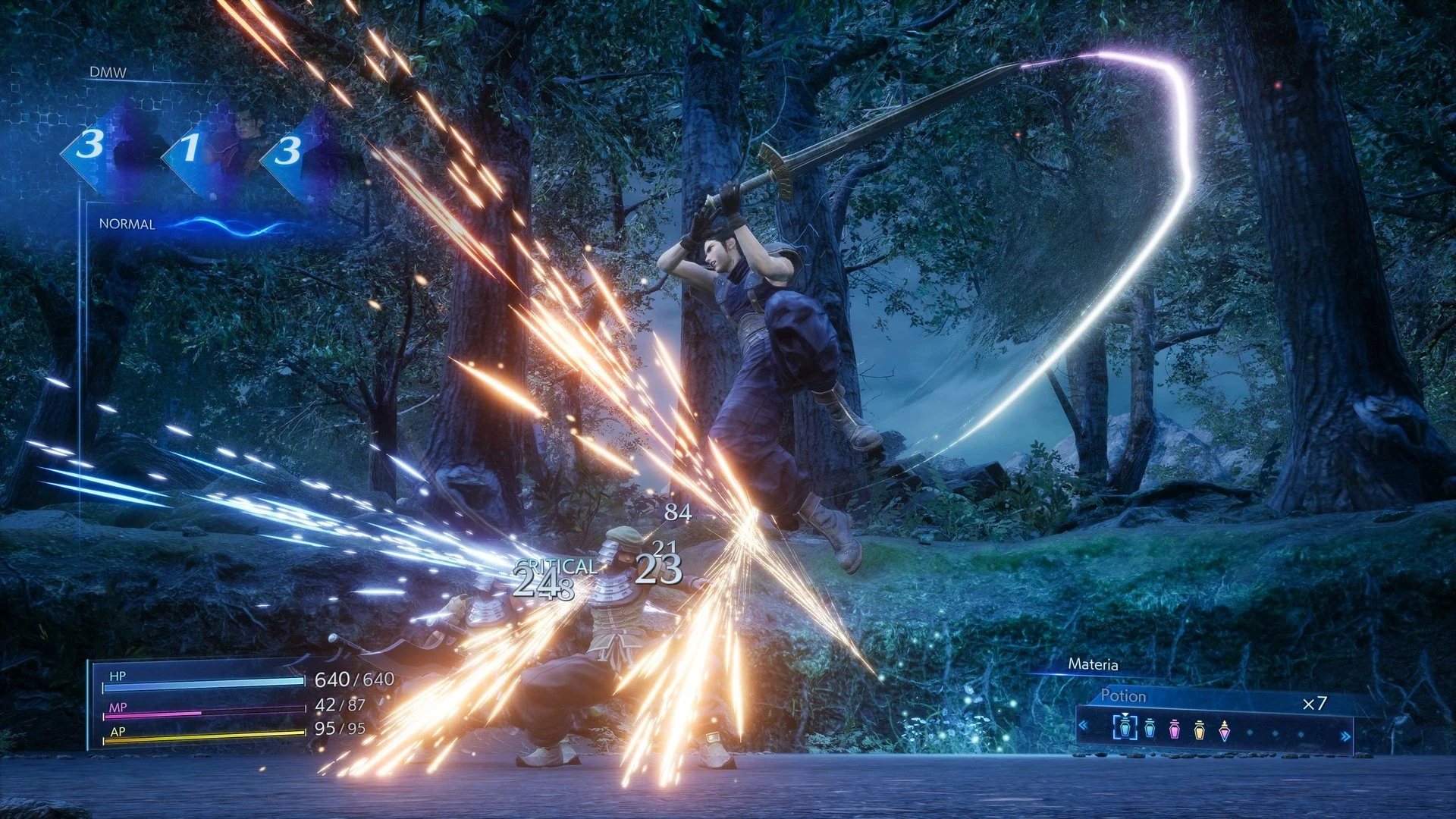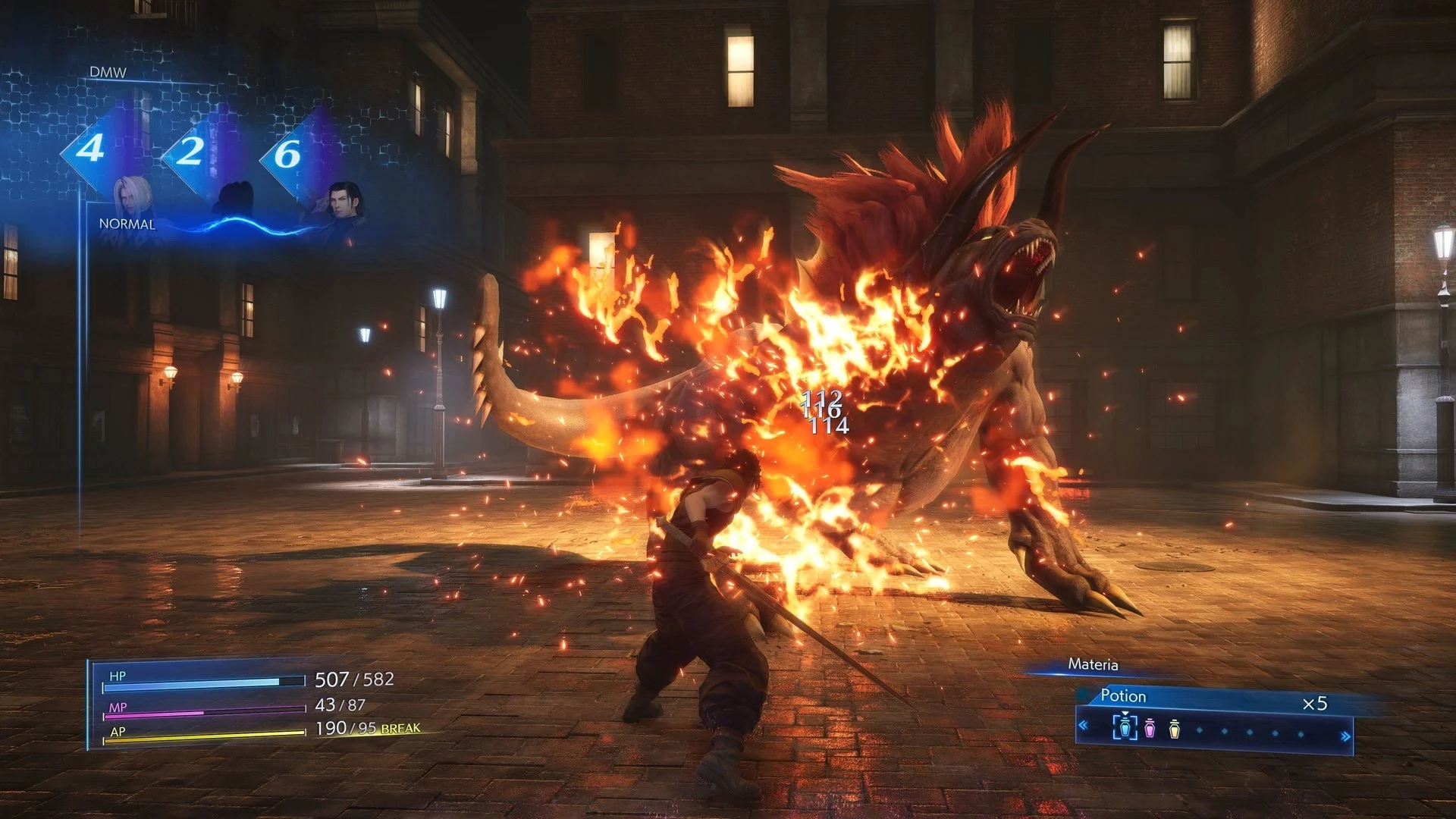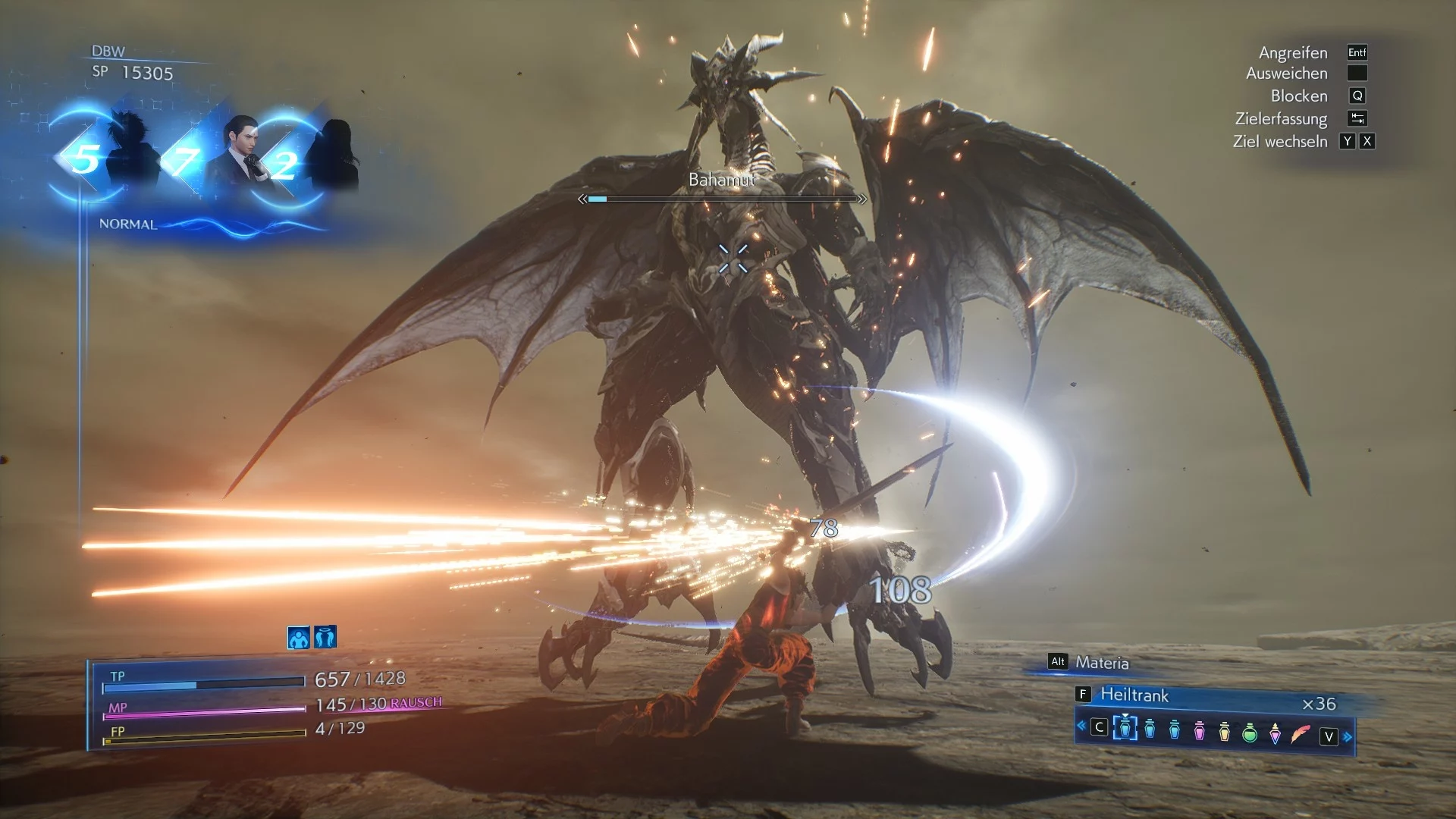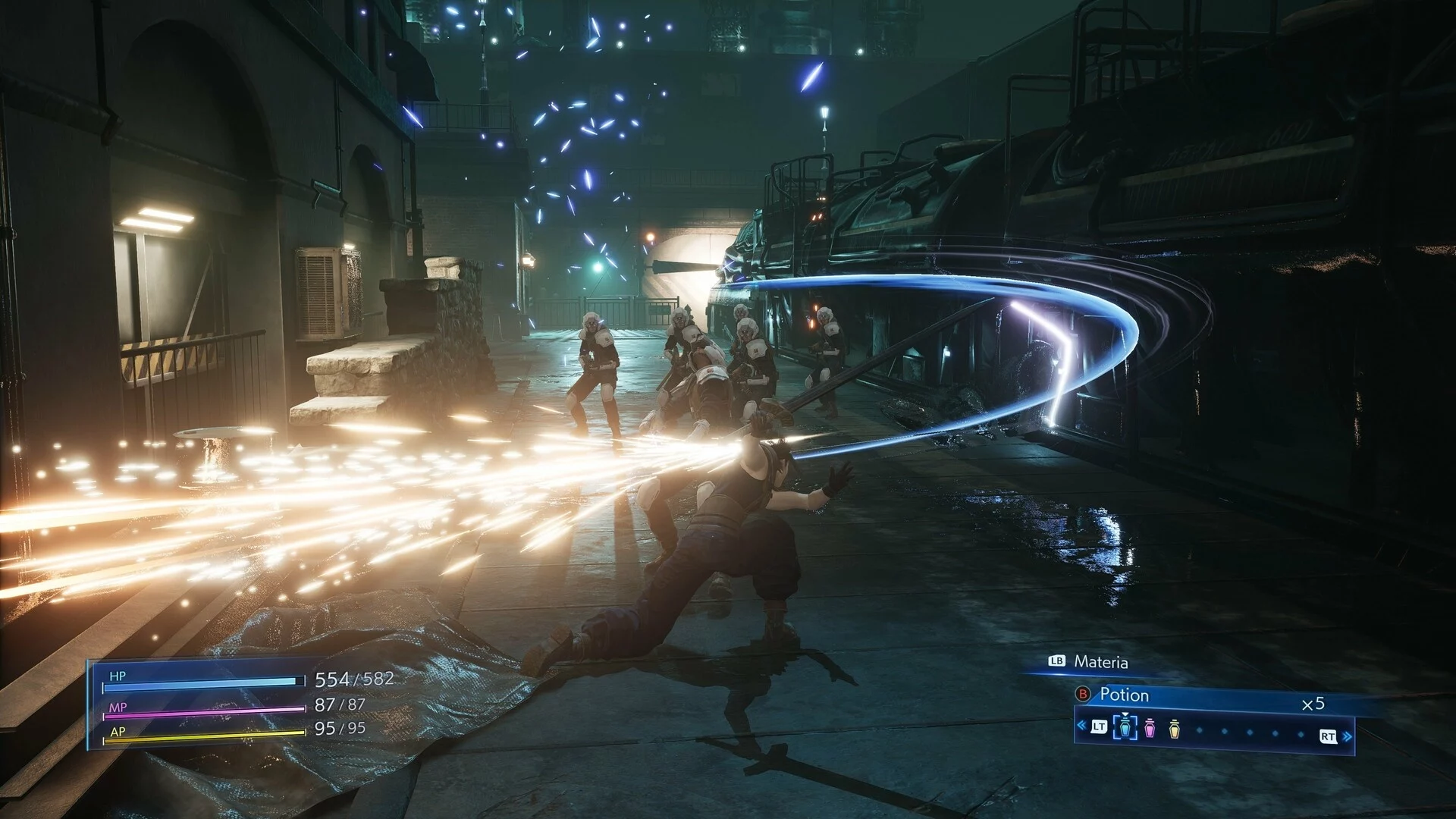Thanks to chic HD visuals and better gore, the remaster almost earns a remake seal of approval, but leaves too little room for RPG virtues.
A quarter of a century ago in Final Fantasy 7, the rebels of Avalanche hijacked a train to Midgar. At the top of their to-do list: Atomise Mako Reactor 1, run by the exploitative megacorporation Shinra.
The heroic conspirators around the blonde spiky-haired Cloud Strife succeeded in blowing up both the power plant and Square”s commercial expectations. Consequently, the now legendary role-playing game received several sequels and prequels, including 2008”s Crisis Core: Final Fantasy 7 for the PlayStation Portable.
Now Square Enix has released Crisis Core: Final Fantasy 7 Reunion, a lush remaster of the FF7 prequel. It”s rich because Reunion doesn”t just leave it at HD textures, but also throws into the pot smart new 3D models, a brisker battle system and environments from Final Fantasy 7 Remake Intergrade. On top of that, reworked sound sounds from the speakers.
However, we”re still talking about a 14-year-old handheld game that can”t stand up to today”s standards, especially in terms of level design. Whether the new features can overcome this is the subject of our test.
Table of Contents
A Shinra soldier on the wrong track?
The main and subplots of Crisis Core: Final Fantasy 7 Reunion are set seven years before the events of FF7 and more or less correspond to the PSP original. So once again we slip into the partly funny, partly tragic role of Zack Fair, a likeable loudmouth and – at the beginning – Shinra soldier of the second rank.
You may remember: “Soldier” is the name of a group of genetically modified elite fighters in the service of Shinra, the world-dominating corporation that taps into the very stream of life for its own energy supply, thus endangering the continued existence of the entire planet Gaia.
Soldier”s job is to defend the questionable company against insurgents like the aforementioned Avalanche group. However, Crisis Core mainly revolves around the sudden disappearance of the poetic rank 1 soldier Genesis.
Together with the hypothermic Tseng, the tousled leader of the Shinra organisation Turks, Zack is tasked with gathering information on the deserter”s whereabouts. Genesis”s trail leads the two professional thugs to the well-guarded Tamblin fortress of Wutai, which the man in hiding had been entrusted with capturing. But soon there is much more at stake than just the loss of a single Shinra infantryman.
However, the linearly told prequel to FF7 is interesting (and above all idiosyncratic) not so much because of its tendency towards the mystical. No, it is interesting because it asks, with Soldat in mind, what individual problems being a failed clone experiment entails. And it is idiosyncratic because it throws on the often heavy garb of a ballad.
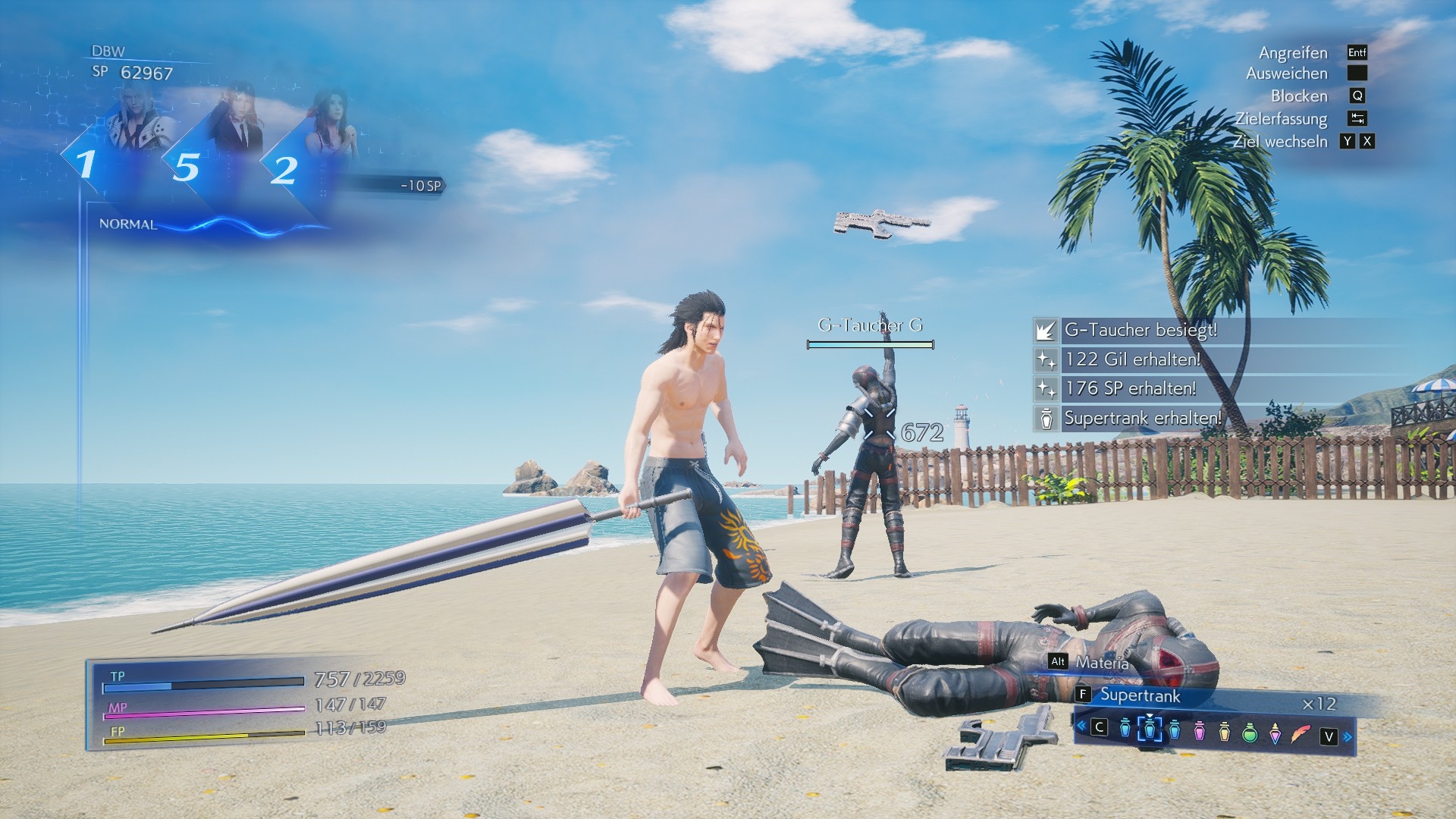
So she frequently has Genesis quote from the fictional epic “Loveless”, such as “My soul, blinded by thirst for vengeance. Endless torment it suffered, to find the end of the journey in my redemption. And your eternal sleep.” Which seems embarrassingly theatrical in tips, since the reciter is wearing – oh God – black angel wings to boot.
Modern Bible Study
The theatricality, however, leads to the clou of the whole thing, which is that the plot refers to the Bible in a figurative sense. And what”s more, it spans an artistic arc into the real world by means of “verse-accompanying” scene arrangements. In this respect, we get to see polished visuals as well as sophisticated art in Reunion. However, we may only realise this towards the end of the story after about 14 hours.
It is to be expected that during this time the curtain will rise several times on familiar faces from Final Fantasy 7. We learn, for example, how Aerith becomes the iconic “flower girl”, or how Cloud gets his man-sized armoured sword. By the way, the long-haired villain Sephiroth plays an important role once again, albeit for the time being as a seemingly sincere Shinra mercenary in a vampiresque leather outfit.
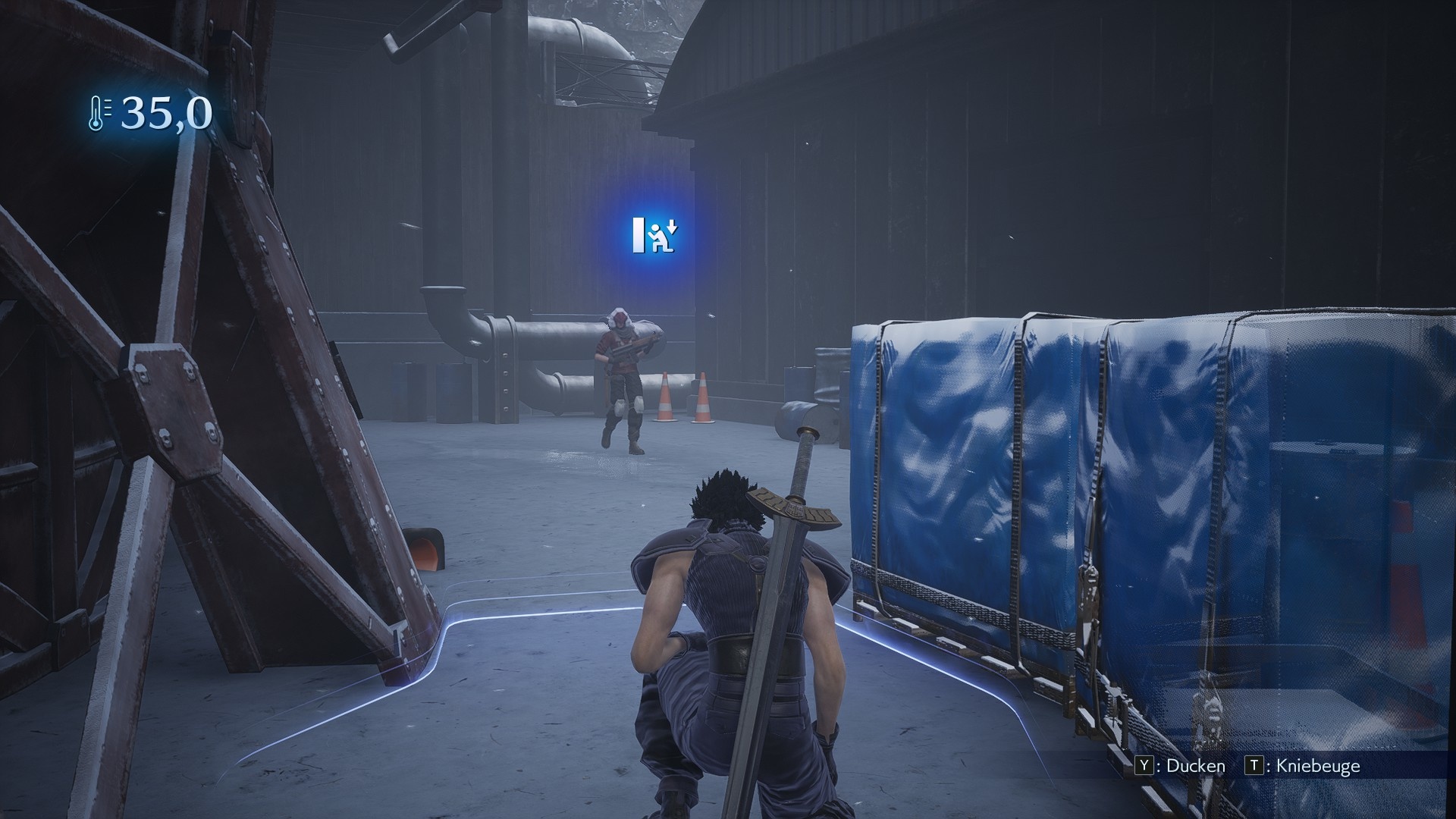
Often, the gripping narrative material is served up in the form of period-enhanced film sequences. Some of the render scenes can even come close to the graphic quality of FF7 Remake Intergrade, supported by excellently enhanced 3D models. On the other hand, isolated stylistic breaks and compression artefacts indicate that a handful of original films remained untouched. Or had to remain untouched.
Either way, the genetic drama knows how to carry us along, which is not least due to the profound and charismatic characters. First and foremost Zack, whose multi-layered personality also elicits many a laugh, especially in the optional story side missions.
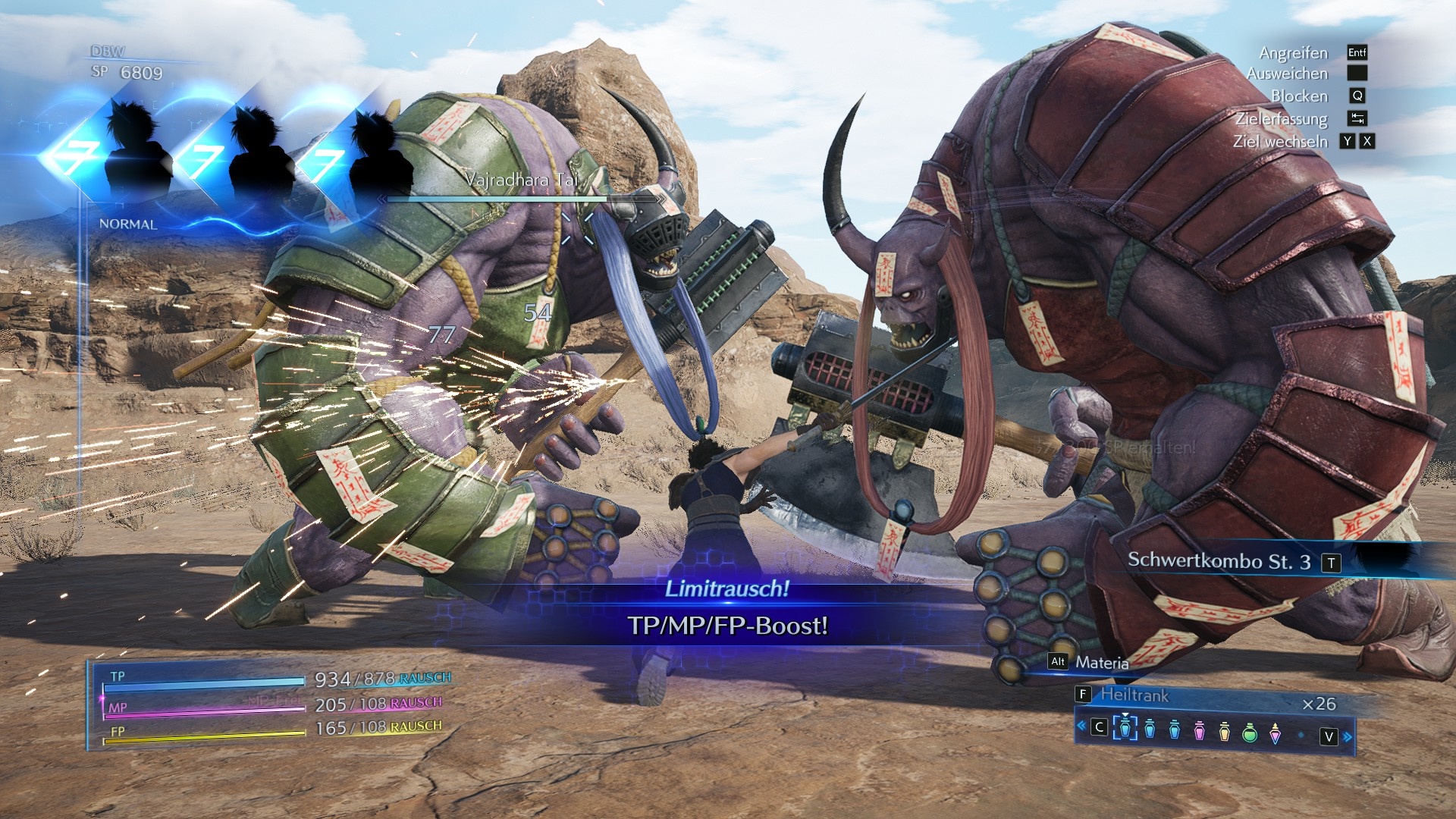
Here we experience, for instance, how bumpy the search for a child purse-snatcher turns out to be when he enjoys the favour of the slum dwellers. Once we also have to unmask spies disguised as civilians by randomly approaching NPCs in Midgar.
The latter, however, is just as exciting as it sounds: not at all. And it gets even more witless, as fetch quest targets are often dazzlingly marked on the map. At least Crisis Core Reunion contains fully dubbed dialogue in English for the first time. German subtitles can be added to the consistently convincing voice actors if required.
Side missions galore
There are endless opportunities to fight, for example in the mission menus at the save points. There we can choose one of 300 (!) optional “missions”, which are mostly relocated (boss) fight repetitions or short backtracking sections.
Okay: Sometimes our victory unlocks a new NPC dialogue, provided the respective mission was advertised by a Midgar resident. Nevertheless, only combat rewards such as materia or accessories are really attractive – and of course the possible level ups, although we made it to the finals without a grind in the test.
Quicker than Dante and Nero
Crisis Core: Final Fantasy 7 Reunion focuses on two things: interesting to humorously written dialogue and clearly improved, lightning-fast fights. Those who appreciate the real-time combat system of the original game can breathe a sigh of relief, because it has basically been preserved.
The new skirmishes differ from the old ones in essentially only three ways. First, they feel much more massive, given revamped effects and sounds. Secondly, the battles are impressively simple thanks to the sometimes automatic approach to the opponent. And thirdly, the combat speed is now so high that it easily surpasses the last two Devil May Cry editions.
Fortunately, we can freely assign all the buttons and enjoy clean camera control via mouse. In this way, we always remain in control of the situation.
What hasn”t changed is Zack”s standard attack, a simple sword combo. But it”s pretty puny – and Zack”s sword, in the later game the famous armoured sword from FF7, is not upgradeable. Nor is the young warrior allowed to protect himself with pieces of armour; only a few accessories gained from battles to boost otherwise untouchable basic values such as attack, vitality, magic and willpower are allowed.
So how can Zack effectively defend himself against enemies like armoured soldiers, magical hellhounds and fluttering cyclops bats? After all, they know all kinds of tricks; including all-round blows, long-lasting poisoning and – without the appropriate Materia protection – instantly deadly “kill magic”. The fact that we are also supplied with energy projectiles, lightning spells and fire storms goes almost without saying in action role-playing games.
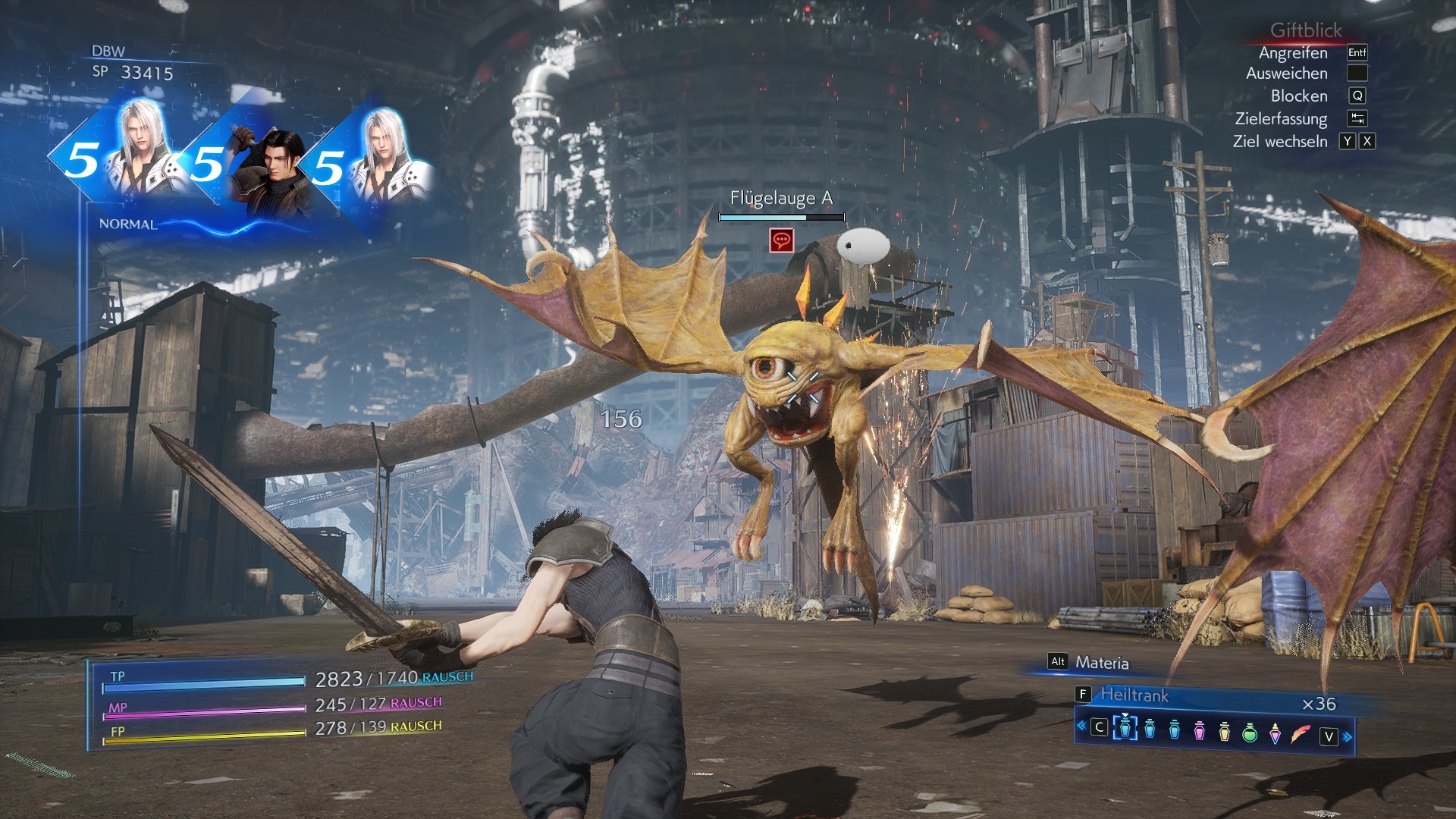
Special Attack Raffle
Now, we have several ways to strike back emphatically within the tightly defined combat zones. First of all, we have six slots that can be called up via shortcuts. They can be assigned either physical special attacks or elemental magic attacks (Materia) or even mixed forms of these. You can read more about this in the box “Sword and Magic”.
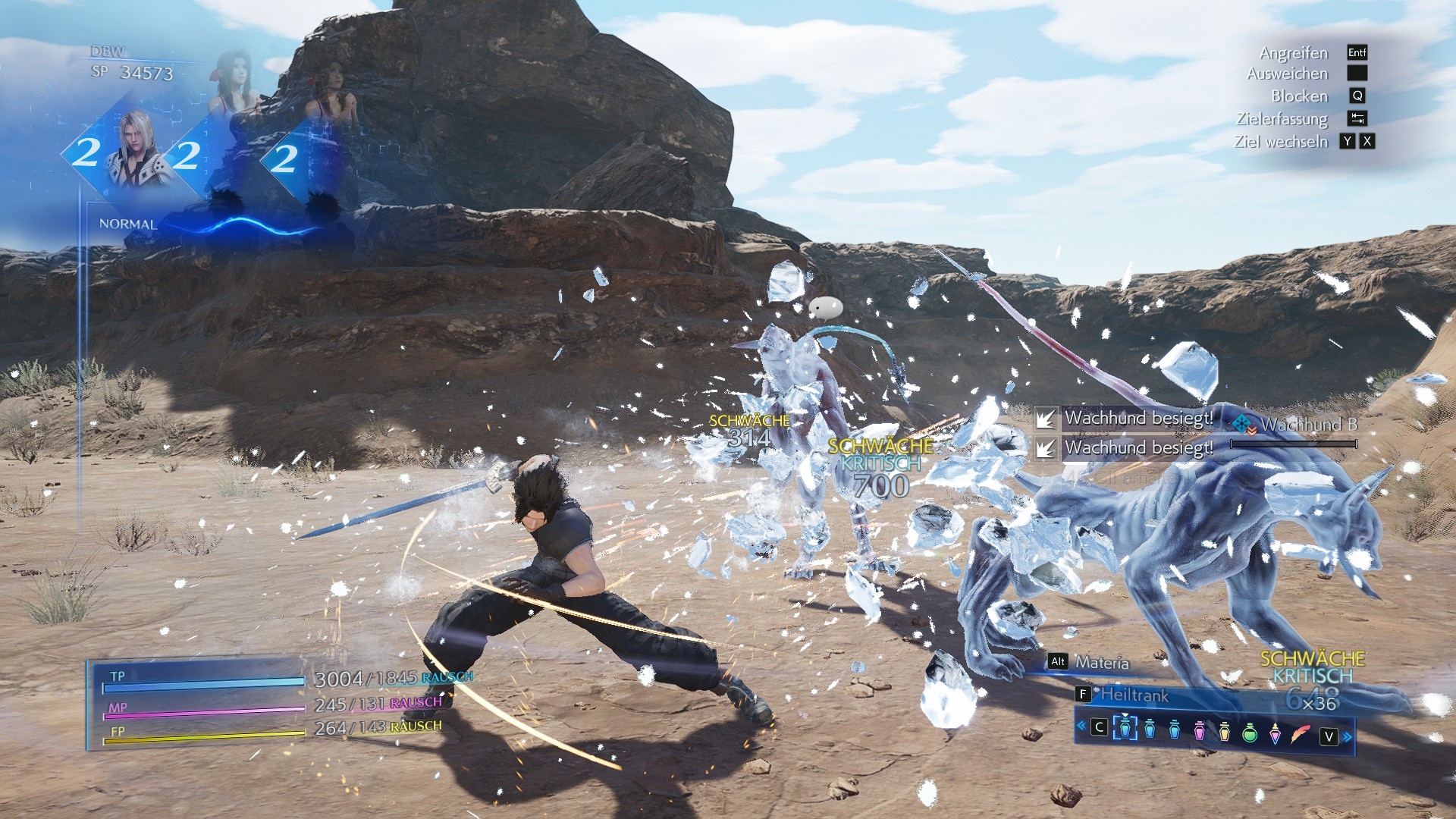
All these skills are subject to cooldowns, but the rather short timeouts hardly take the wind out of our sails. The FP or MP costs incurred when performing special abilities are also no problem thanks to regenerative potions from Shinra”s online kiosk. What”s more, we replenish our generous skill and magic lists for free at save points (free save? Nada).
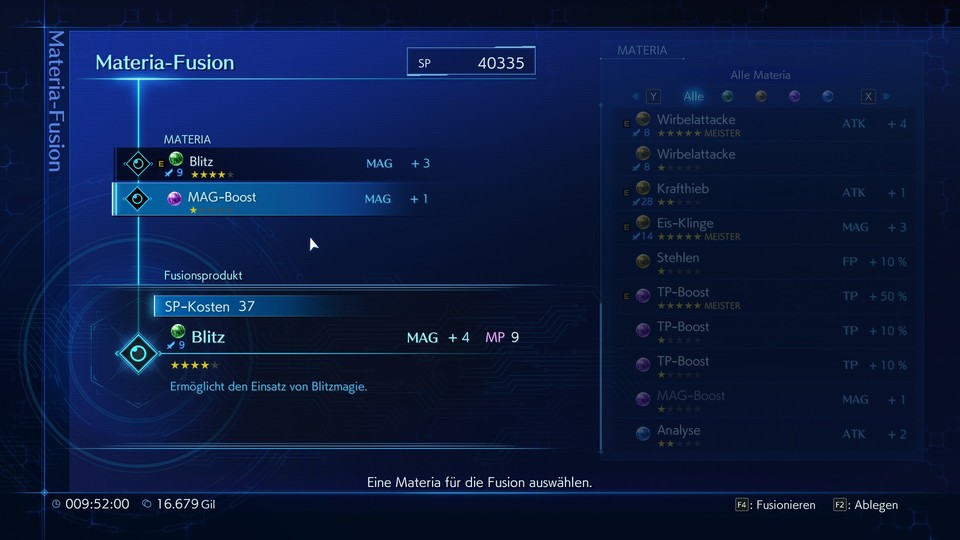
Sword and Magic
Zack”s physical special attacks that burn skill points (FP) include:
- Vortex Attack: Zack draws extra oomph from a spinning jump for a sword attack that can land multiple hits on multiple enemies.
- Power Strike: The whipping boy jumps back briefly for a particularly powerful vertical strike.
- Achill Slash:Powerful horizontal sword attack from the jump.
- Sweep away: Here, certain adversaries are thrown out of the fight with a blade hit. Very useful when defeat is imminent.
Meanwhile, Materia, something like crystalline energy, magically assists us in exchange for Magic Points (MP):
- TP Boost:Increases Zack”s maximum hit points.
- Dark Bolt: Inflicts lightning damage to a single enemy and possibly causes silence (the poor person can no longer use magic temporarily).
- Fire: Simple long-range fire spell with long tail and pithy impact.
- Vitra: The classic cleric”s healing spell combined with a meaningful leap backwards.
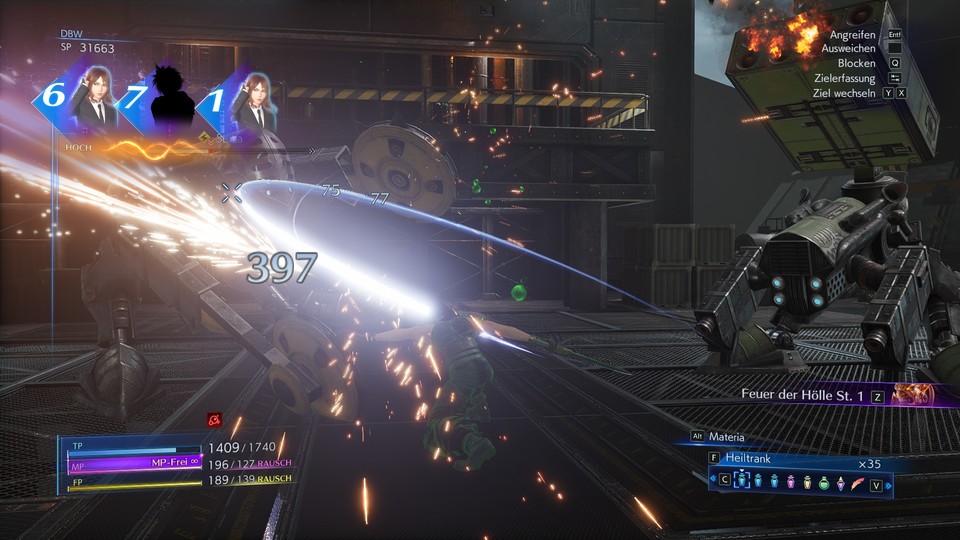
All abilities strengthen through frequent use, at least until they reach five stars or the master level. The coolest thing, however, is the possibility to create mixed abilities. To do this, we insert any materia balls and physical skills into two slots under the menu item “Materia Fusion”.
Although the elements are lost through the combination, it is extremely appealing to be presented with the sometimes unexpected results and to try them out. An example would be the “ice blade” created from a vortex attack and ice materia, the firing of which makes the opponent”s TP bars go in heads very quickly.
The fact that we increase the limit display, already known from Final Fantasy 7, through combat actions makes us even more defensible. As soon as it is fully charged, we trigger a series of powerful sword blows (“Limit Rush”) at the touch of a button. Furthermore, the so-called DBW matrix a.k.a. “Digital Waves of Consciousness” supports us – without, and this is new in Reunion, sabotaging the combat action with large-scale fade-ins.
Behind DBW is an automated gambling mechanic similar to a one-armed bandit. It is only available during fights and helps Zack to level up on a random basis, or gives him a powerful one-time attack. These include the curious “Chokobo kick” as well as a thunderous helicopter attack and summoned Espers – huge creatures from hell with, as the film inserts show, infernal destructive power.
However, we first have to earn the Espers, i.e. defeat them in one of the colossally staged boss fights. Which is not easy! For the big bosses like the mechanical Wrath-Bahamut and the demon-like Ifrit also have DBW attacks in store. However, they have to charge up briefly beforehand, which gives us the chance to weaken the respective skill with a hail of blows or even stop it completely.
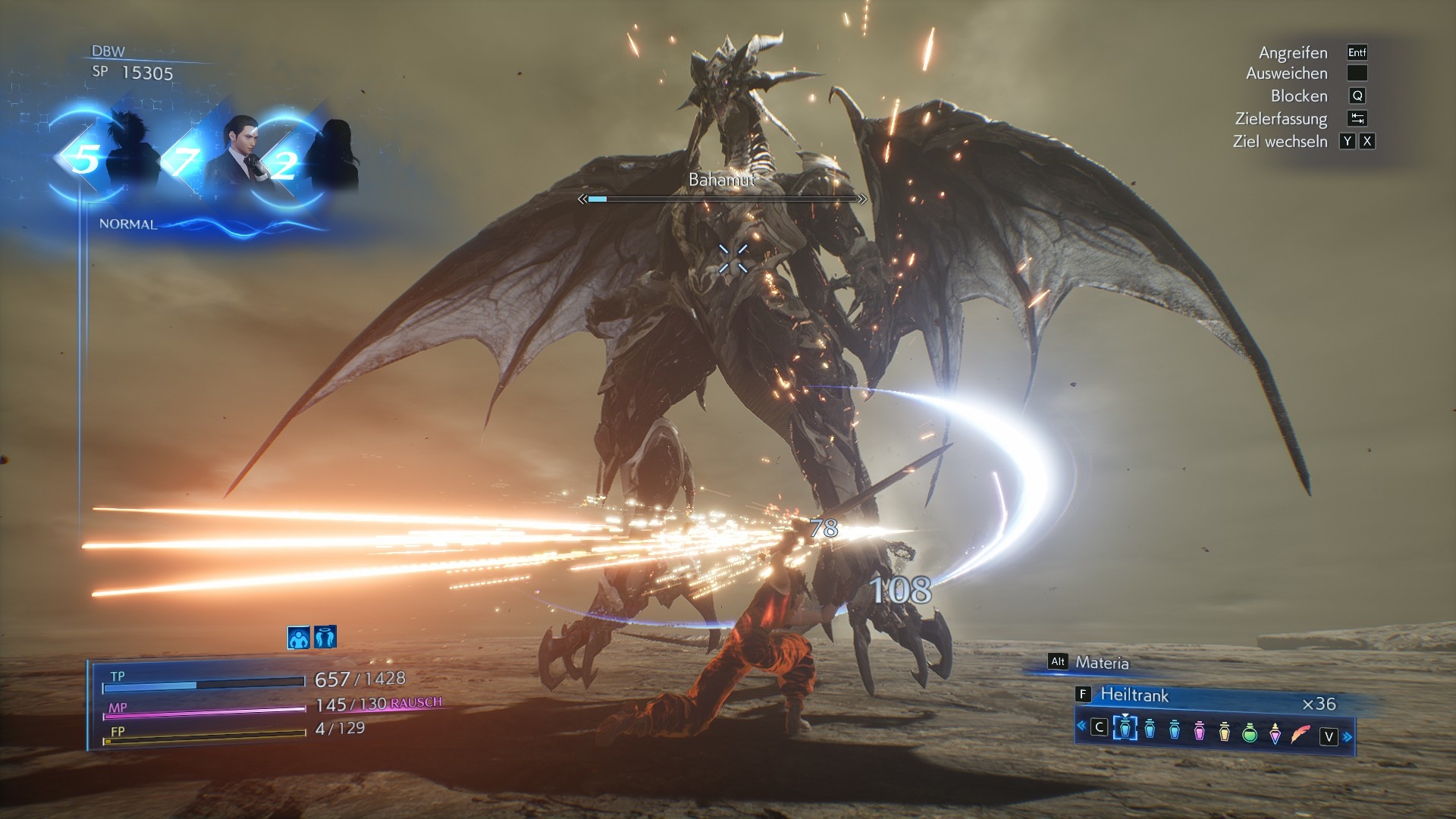
The bottom line is that Reunion”s souped-up combat system produces outstandingly fluid and fun brawls. In the event of death, we”re even allowed to change our equipment before returning to the beginning of the encounter. So what could be criticised at this point? Perhaps that there is generally too much banging on and not enough else done.
Sure, there is a certain amount of gameplay variety, for example when we take out guard robots with the help of stationary sniper rifles. But such refreshments do not pour over our heads until the penultimate of the ten chapters. And by then, the – albeit epic – story might not be argument enough for some.
Modern on the outside, but modern on the inside
The only question left is how the remaster will turn out technically. It”s hardly worth mentioning that Sector 1”s train station, Midgar”s fountain square and the high-tech Shinra building look dead smart. This is where Final Fantasy 7 Remake Intergrade has done wonderful groundwork.
But the Crisis Core-exclusive locales are also pretty darn impressive, especially by remaster standards. Apart from a few ricochets like the guard towers of the Tamblin fortress, which seem to have skimped on the texture lifting upon closer inspection, the difference to the FF7 remake assets is not that quickly noticeable.
Furthermore, the game ran at a stable 60 frames per second on our test system consisting of a Core i7-8700k with 6x 3.7 GHz, a GeForce RTX 3060 and 32 gigabytes of DDR4 RAM at maximum settings.
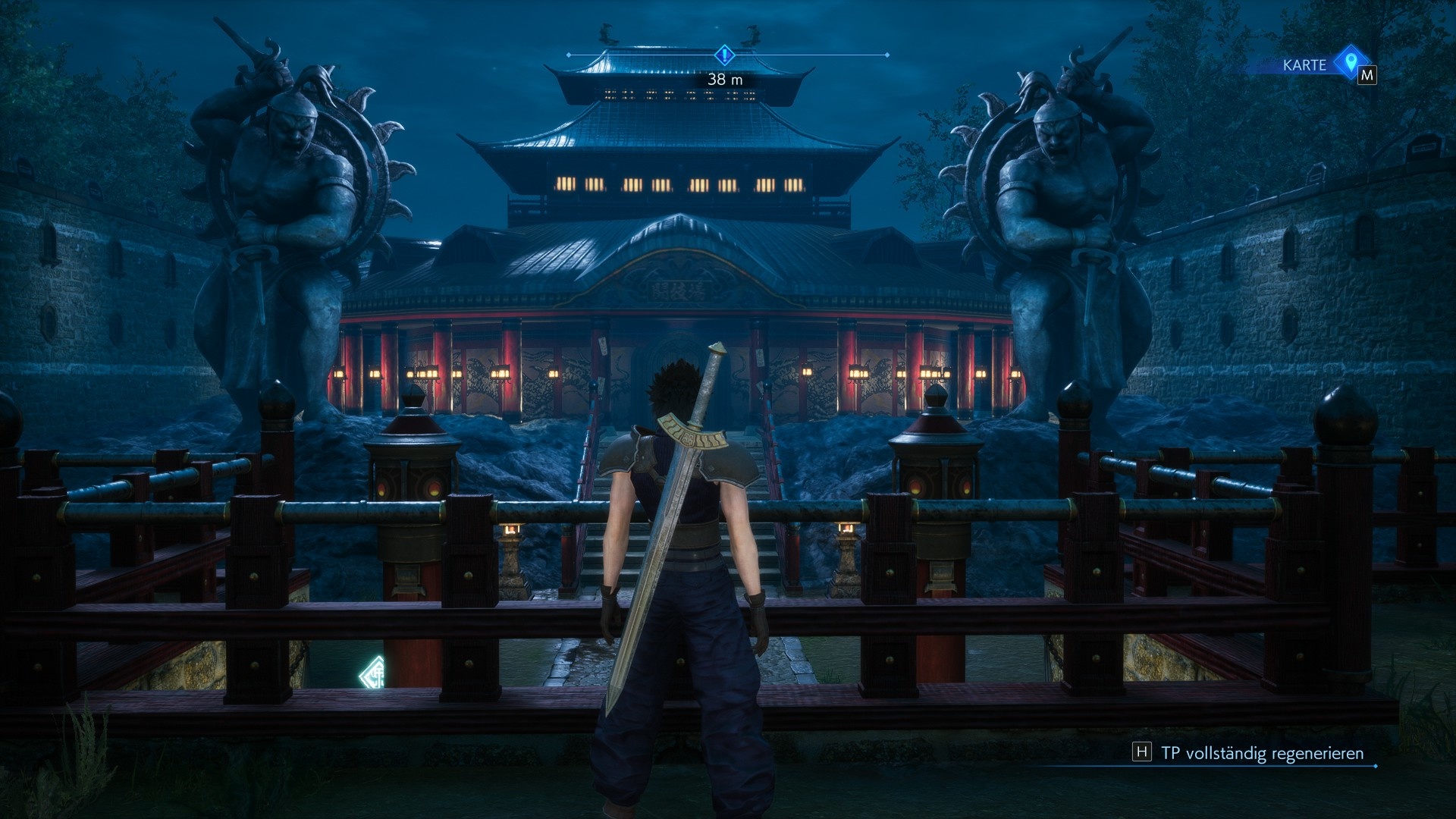
Under its fresh, appealing cover, however, Crisis Core: Final Fantasy 7 hasn”t aged particularly well. For example, there is nothing to discover within the old-fashioned narrowly designed country paths, rocky caves and snowy mountain passes except for a maximum of two chests with useful objects and diced monsters (random battles). The only exception is the tiny village of Banora, where it is worth knocking on every door.
Amusing in this context: Because many areas are hardly bigger than a backyard in Croatian Hum, a task sometimes has to send us back and forth between locations that are only a few metres apart. In the end, an overhauled remake would have been better. On the other hand, with Crisis Core Reunion there is now a remaster that some publishers should take as a model.
Conclusion: High-quality remaster with old quirks
Although not every piece of music has been remastered and not every single render has been upgraded: Crisis Core: Final Fantasy 7 Reunion easily has what it takes to be the remaster of the year. In fact, the result is so good in terms of both visuals and combat that a comparison with the original PSP version would almost be unfair.
However, the action role-playing game cannot hide its old age and handheld origins, even in its chic new guise. If you want to enjoy the gripping story about four tragic G-soldiers, you have to put up with claustrophobically designed, empty game areas and many pointless side quests.
Editor”s verdict
Talking, beating, brawling and talking – by a hair”s breadth I got tired of it at a certain point. Indeed, Crisis Core Reunion makes no effort to repackage this monotonous routine every now and then. Instead, there are only rudiments of variety offered: Build Aerith a flower cart. Great idea, if it hadn”t been enough to pick up a few objects marked on the map. The few other attempts didn”t work for me either, but something else kept me interested: Zack.
Not only does this guy have a completely ingenious sense of humour, but he also provides others with a template for highly smug comments. I would definitely have Zack written in my poetry album, the others maybe on autograph cards. Their stories are impressive enough for that. In short, if you like Final Fantasy 7, you should play Reunion for the story alone. Especially in the now available, highly polished form for a remaster.

